90 Books Published by Oxford University Press on AALBC — Book Cover Collage
 We Tried to Tell Y’All: Black Twitter and the Rise of Digital Counternarratives
We Tried to Tell Y’All: Black Twitter and the Rise of Digital Counternarratives
by Meredith D. ClarkOxford University Press (Jan 07, 2025)
Read Detailed Book Description
Through interviews, news analysis, and personal observation, Meredith D. Clark presents the first book about how Black Twitter users carved out a vital space for fast-paced, incisive commentary on Black life in America not found in the mainstream press.
Since 1827, when Freedom’s Journal, the first newspaper to be published by free Black men in the United States, Black folks have been making use of the media technologies available to them to tell their own stories in their own ways. In We Tried to Tell Y’all: Black Twitter and the Rise of Digital Counternarratives, Meredith D. Clark explains how Black social media users subvert the digital divide narrative while confronting centuries of erasure, omission, and mischaracterization of Black life in ‘mainstream’ media.
This ethnographic exploration of Black Twitter draws on news media analysis, in-depth interviews, and personal observation to trace the phenomenon’s three levels of community connection, and advances a theory of Black Digital Resistance that illustrates how Black social media users harnessed the platform to annotate and narrate everything from play to protest to everyday life.
From chapters that recognize the “locomotive power” of Black women and femmes’ intellectual labor to a thorough takedown of so-called “cancel culture,” We Tried to Tell Y’all offers readers a rich exploration of the latest chapter of Black media production. Regardless of the future direction of the platform, Black Twitter will forever remain an important moment in the long history of the Black press and Black social movements in the United States.
Table of Contents:- Chapter 1. How Do I Get to Black Twitter?
- Chapter 2. We Wish to Tweet Our Own Cause—Theorizing Black Twitter
- Chapter 3. Sisters Gonna Work It Out—Black Women’s Digital Labor
- Chapter 4. Agency, Activism, and Agenda-Setting in the Movement for Black Lives
- Chapter 5. ‘Cancel Culture’ is Digital Accountability by Another Name
- Chapter 6. “There are Black People in the Future”
 Combee: Harriet Tubman, the Combahee River Raid, and Black Freedom During the Civil War
Combee: Harriet Tubman, the Combahee River Raid, and Black Freedom During the Civil War
by Edda L. Fields-BlackOxford University Press (Feb 09, 2024)
Read Detailed Book Description
Booklist Top Ten History Books of 2024
Most Americans know of Harriet Tubman’s legendary life: escaping enslavement in 1849, she led more than 60 others out of bondage via the Underground Railroad, gave instructions on getting to freedom to scores more, and went on to live a lifetime fighting for change. Yet the many biographies, children’s books, and films about Tubman omit a crucial chapter: during the Civil War, hired by the Union Army, she ventured into the heart of slave territory—Beaufort, South Carolina—to live, work, and gather intelligence for a daring raid up the Combahee River to attack the major plantations of Rice Country, the breadbasket of the Confederacy.
Edda L. Fields-Black—herself a descendent of one of the participants in the raid—shows how Tubman commanded a ring of spies, scouts, and pilots and participated in military expeditions behind Confederate lines. On June 2, 1863, Tubman and her crew piloted two regiments of Black US Army soldiers, the Second South Carolina Volunteers, and their white commanders up coastal South Carolina’s Combahee River in three gunboats. In a matter of hours, they torched eight rice plantations and liberated 730 people, people whose Lowcountry Creole language and culture Tubman could not even understand. Black men who had liberated themselves from bondage on South Carolina’s Sea Island cotton plantations after the Battle of Port Royal in November 1861 enlisted in the Second South Carolina Volunteers and risked their lives in the effort.
Using previously unexamined documents, including Tubman’s US Civil War Pension File, bills of sale, wills, marriage settlements, and estate papers from planters’ families, Fields-Black brings to life intergenerational, extended enslaved families, neighbors, praise-house members, and sweethearts forced to work in South Carolina’s deadly tidal rice swamps, sold, and separated during the antebellum period. When Tubman and the gunboats arrived and blew their steam whistles, many of those people clambered aboard, sailed to freedom, and were eventually reunited with their families. The able-bodied Black men freed in the Combahee River Raid enlisted in the Second South Carolina Volunteers and fought behind Confederate lines for the freedom of others still enslaved not just in South Carolina but Georgia and Florida.
After the war, many returned to the same rice plantations from which they had escaped, purchased land, married, and buried each other. These formerly enslaved peoples on the Sea Island indigo and cotton plantations, together with those in the semi-urban port cities of Charleston, Beaufort, and Savannah, and on rice plantations in the coastal plains, created the distinctly American Gullah Geechee dialect, culture, and identity—perhaps the most significant legacy of Harriet Tubman’s Combahee River Raid.
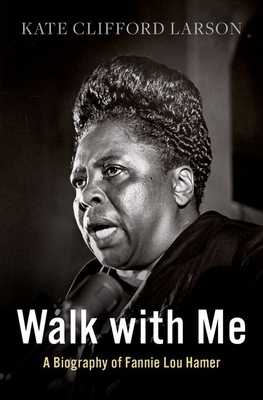 Walk with Me: A Biography of Fannie Lou Hamer
Walk with Me: A Biography of Fannie Lou Hamer
by Kate Clifford LarsonOxford University Press (Sep 01, 2021)
Read Detailed Book Description
Few figures embody the physical courage, unstinting sacrifice, and inspired heroism behind the Civil Rights movement more than Fannie Lou Hamer. For millions hers was the voice that made "This Little Light of Mine" an anthem. Her impassioned rhetoric electrified audiences. At the Democratic
Convention in 1964, Hamer’s televised speech took not just Democrats but the entire nation to task for abetting racial injustice, searing the conscience of everyone who heard it. Born in the Mississippi Delta in 1917, Hamer was the 20th child of Black sharecroppers and raised in a world in which
racism, poverty, and injustice permeated the cotton fields. As the Civil Rights Movement began to emerge during the 1950s, she was struggling to make a living with her husband on lands that her forebears had cleared, ploughed, and harvested for generations. When a white doctor sterilized her without
her permission in 1961, Hamer took her destiny into her own hands.
does justice to the full force of Hamer’s activism and example. Based on new sources, including recently opened FBI files and Oval Office transcripts, the biography features interviews with some of the people closest to Hamer and conversations with Civil Rights leaders who fought alongside her.
Larson’s biography will become the standard account of an extraordinary life.
 Slavery and Class in the American South: A Generation of Slave Narrative Testimony, 1840-1865
Slavery and Class in the American South: A Generation of Slave Narrative Testimony, 1840-1865
by William L. AndrewsOxford University Press (Oct 01, 2020)
Read Detailed Book Description
“The distinction among slaves is as marked, as the classes of society are in any aristocratic community. Some refusing to associate with others whom they deem to be beneath them, in point of character, color, condition, or the superior importance of their respective masters.” Henry Bibb, fugitive slave, editor, and antislavery activist, stated this in his Narrative of the Life and Adventures of Henry Bibb (1849). In William L. Andrews's magisterial study of an entire generation of slave narrators, more than 60 mid-nineteenth-century narratives reveal how work, family, skills, and connections made for social and economic differences among the enslaved of the South. Slave narrators disclosed class-based reasons for violence that broke out between “impudent,” “gentleman,” and “lady” slaves and their resentful “mean masters.” Andrews's far-reaching book shows that status and class played key roles in the self- and social awareness and in the processes of liberation portrayed in the narratives of the most celebrated fugitives from U.S. slavery, such as Frederick Douglass, Harriet Jacobs, William Wells Brown, and William and Ellen Craft.
Slavery and Class in the American South explains why social and economic distinctions developed and how they functioned among the enslaved. Noting that the majority of the slave narrators came from the higher echelons of the enslaved, Andrews also pays close attention to the narratives that have received the least notice from scholars, those from the most exploited class, the “field hands.” By examining the lives of the most and least acclaimed heroes and heroines of the slave narrative, Andrews shows how the dividing edge of social class cut two ways, sometimes separating upper and lower strata of slaves to their enslavers' advantage, but at other times fueling pride, aspiration, and a sense of just deserts among some of the enslaved that could be satisfied by nothing less than complete freedom.
The culmination of a career spent studying African American literature, this comprehensive study of the antebellum slave narrative offers a ground-breaking consideration of a unique genre of American literature.
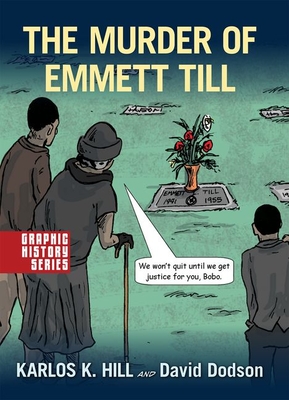 The Murder of Emmett Till: A Graphic History
The Murder of Emmett Till: A Graphic History
by Karlos K. HillOxford University Press (Jul 24, 2020)
Read Detailed Book Description
"Karlos Hill’s graphic history of the murder of Emmett Till brims with energy. The graphic rendering brings the 60-year-old story into the present. The illustrations cut through the decades, revive the intimacy and horror of the distant story, and remind us that the racism that killed Till is still very much alive. At the same time, the extended critical context keeps the graphic history anchored firmly in fact. Moving between poignant illustrations and incisive commentary, Hill’s The Murder of Emmett Till: A Graphic History just may become the go-to text for a new generation of students."—Dave Tell, University of Kansas, author of Remembering Emmett Till
"The strength of this book is the depth and scope in which it explores the Till case. Students and other readers who are familiar and unfamiliar with the text will come away from it learning something new about the Till family, the whistling incident, the murder, and the trial."—Ashley D. Farmer, University of Texas, Austin
"The tragic story of Emmett Till riveted American freedom movements to bold new strategies fifteen years after his death at the hands of white terrorists in Mississippi. As brilliantly captured in this engaging graphic history, that story will rivet your attention as well. The book is drawn with spare beauty, narrated with simple power, and accompanied by an authoritative historical essay on the eventful times in which the Chicago teenager lived, died, and was stirringly remembered. This is a perfect book for so many college courses and will surely be read eagerly outside of them as well."—David Roediger, University of Kansas, author of How Race Survived U.S. History
"Karlos Hill’s graphic history is painfully accurate. It shows how the murder of Emmett Till helped to dramatically change the political and social norms of the United States in a relatively short period of time."—Eric R. Jackson, Northern Kentucky University
"This text is timely in terms of its genre and historical content. It addresses the false accusation made by Bryant, and the nuance of Bobo’s personality as a prankster. History presented in this way will reach a broad audience."—Angela Flounory, University of Michigan-Dearborn
 The Oxford Handbook of Children’s Rights Law
The Oxford Handbook of Children’s Rights Law
by Jonathan Todres and Shani M. KingOxford University Press, USA (May 13, 2020)
Read Detailed Book Description
Children’s rights law is a relatively young but rapidly developing discipline. The U.N. Convention on the Rights of the Child, the field’s core legal instrument, is the most widely ratified human rights treaty in history. Yet, like children themselves, children’s rights are often relegated to the margins in mainstream legal, political, and other discourses, despite their application to approximately one-third of the world’s population and every human being’s first stages of life. Now thirty years old, the Convention on the Rights of the Child (CRC) signalled a definitive shift in the way that children are viewed and understood—from passive objects subsumed within the family to full human beings with a distinct set of rights. Although the CRC and other children’s rights law have spurred positive changes in law, policies, and attitudes toward children in numerous countries, implementation remains a work in progress. We have reached a state in the evolution of children’s rights in which we need more critical evaluation and assessment of the CRC and the large body of children’s rights law and policy that this treaty has inspired. We have moved from conceptualizing and adopting legislation to focusing on implementation and making the content of children’s rights meaningful in the lives of all children. This book provides a critical evaluation and assessment of children’s rights law, including the CRC. With contributions from leading scholars and practitioners from around the world, it aims to elucidate the content of children’s rights law, explore the complexities of implementation, and identify critical challenges and opportunities for children’s rights law.
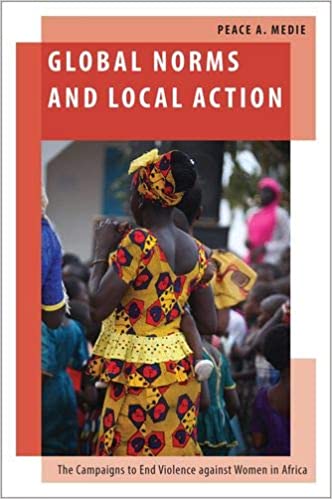 Global Norms and Local Action: The Campaigns to End Violence Against Women in Africa
Global Norms and Local Action: The Campaigns to End Violence Against Women in Africa
by Peace Adzo MedieOxford University Press (Mar 06, 2020)
Read Detailed Book Description
Violence against women has been a focus of transnational advocacy networks since the early 1980s, and the United Nations has, in intervening years, passed a series of resolutions to condemn, prevent, investigate, and punish this violence. Member states have committed to implementing this agenda. Yet, despite this buy-in at the global level, implementation at the domestic level remains uneven. Scholars have found that states are more likely to translate global standards into national laws when pressured by women’s movements and international organizations. However, a dearth of research on the implementation at the national and street-levels of these international women’s rights norms hampers an understanding of what happens after states pass laws.
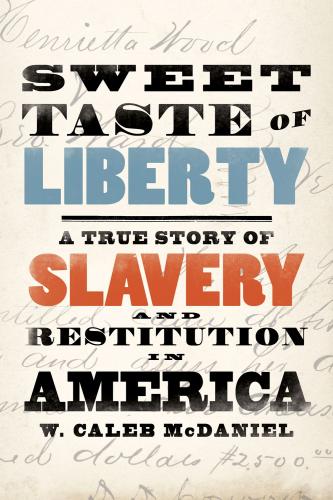 Sweet Taste of Liberty: A True Story of Slavery and Restitution in America
Sweet Taste of Liberty: A True Story of Slavery and Restitution in America
by W. Caleb McDanielOxford University Press (Sep 04, 2019)
Read Detailed Book Description
The unforgettable saga of one enslaved woman’s fight for justice—and reparations
Born into slavery, Henrietta Wood was taken to Cincinnati and legally freed in 1848. In 1853, a Kentucky deputy sheriff named Zebulon Ward colluded with Wood’s employer, abducted her, and sold her back into bondage. She remained enslaved throughout the Civil War, giving birth to a son in Mississippi and never forgetting who had put her in this position. By 1869, Wood had obtained her freedom for a second time and returned to Cincinnati, where she sued Ward for damages in 1870. Astonishingly, after eight years of litigation, Wood won her case: in 1878, a Federal jury awarded her $2,500. The decision stuck on appeal. More important than the amount, though the largest ever awarded by an American court in restitution for slavery, was the fact that any money was awarded at all. By the time the case was decided, Ward had become a wealthy businessman and a pioneer of convict leasing in the South. Wood’s son later became a prominent Chicago lawyer, and she went on to live until 1912. McDaniel’s book is an epic tale of a black woman who survived slavery twice and who achieved more than merely a moral victory over one of her oppressors. Above all, Sweet Taste of Liberty is a portrait of an extraordinary individual as well as a searing reminder of the lessons of her story, which establish beyond question the connections between slavery and the prison system that rose in its place.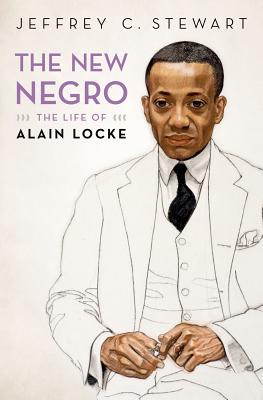 The New Negro: The Life of Alain Locke
The New Negro: The Life of Alain Locke
by Jeffrey C. StewartOxford University Press (Feb 01, 2018)
Read Detailed Book Description
Alain Locke a tiny, fastidiously dressed man emerged from Black Philadelphia around the turn of the century to mentor a generation of young artists including Langston Hughes, Zora Neale Hurston, and Jacob Lawrence and call them the New Negro — the creative African Americans whose art, literature, music, and drama would inspire Black people to greatness.”
In The New Negro: The Life of Alain Locke, Jeffrey C. Stewart offers the definitive biography of the father of the Harlem Renaissance, based on the extant primary sources of his life and on interviews with those who knew him personally. He narrates the education of Locke, including his becoming the first African American Rhodes Scholar and earning a PhD in philosophy at Harvard University, and his long career as a professor at Howard University. Locke also received a cosmopolitan, aesthetic education through his travels in continental Europe, where he came to appreciate the beauty of art and experienced a freedom unknown to him in the United States. And yet he became most closely associated with the flowering of Black culture in Jazz Age America and his promotion of the literary and artistic work of African Americans as the quintessential creations of American modernism. In the process he looked to Africa to find the proud and beautiful roots of the race. Shifting the discussion of race from politics and economics to the arts, he helped establish the idea that Black urban communities could be crucibles of creativity.
Stewart explores both Locke’s professional and private life, including his relationships with his mother, his friends, and his white patrons, as well as his lifelong search for love as a gay man. Stewart’s thought-provoking biography recreates the worlds of this illustrious, enigmatic man who, in promoting the cultural heritage of Black people, became — in the process — a New Negro himself.
Locke represents a biographical challenge of unusual difficulty. Superbly educated, dazzlingly intelligent, psychologically complicated, and a cultural analyst and visionary whose books and essays helped to shape our understanding of race and modern American culture, Locke could also be petty and vindictive, manipulative and cruel. Also stamping his identity was his brave commitment to living fully as a gay man, despite its various dangers. Jeffrey Stewart, rising superbly to this challenge, has given us one of the finest literary biographies to appear in recent years.”Arnold Rampersad, Stanford University
Here Jeffrey C. Stewart is interviewed by E. Ethelbert Miller’s radio program, On The Margin. This interview was recorded, Thursday, February 1, 2018 on WPFW 89.3 FM in Washington, DC
 On Race: 34 Conversations in a Time of Crisis
On Race: 34 Conversations in a Time of Crisis
by George YancyOxford University Press, USA (Oct 02, 2017)
Read Detailed Book Description
With the recent barrage of racially motivated killings, violent encounters between blacks and whites, and hate crimes in the wake of the 2016 election that foreground historic problems posed by systemic racism, including disenfranchisement and mass incarceration, it would be easy to despair that Dr. Martin Luther King Jr.’s dream has turned into a nightmare. Many Americans struggle for equal treatment, facing hate speech, brutality, and a national spirit of hopelessness; their reality is hardly "post-racial". The need for clarity surrounding the significance of race and racism in the United States is more pressing than ever. This collection of interviews on race, some originally conducted for The New York Times philosophy blog, The Stone, provides rich context and insight into the nature, challenges, and deepest questions surrounding this fraught and thorny topic.
In interviews with such major thinkers as bell hooks, Judith Butler, Cornel West, Kwame Anthony Appiah, Peter Singer, and Noam Chomsky, Yancy probes the historical origins, social constructions, and lived reality of race along political and economic lines. He interrogates fully race’s insidious expressions, its transcendence of Black/white binaries, and its link to neo-liberalism, its epistemological and ethical implications, and, ultimately, its future.
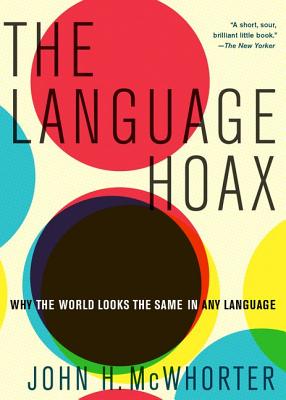 The Language Hoax
The Language Hoax
by John McWhorterOxford University Press (Jun 01, 2016)
Read Detailed Book Description
Japanese has a term that covers both green and blue. Russian has separate terms for dark and light blue. Does this mean that Russians perceive these colors differently from Japanese people? Does language control and limit the way we think?
This short, opinionated book addresses the Sapir-Whorf hypothesis, which argues that the language we speak shapes the way we perceive the world. Linguist John McWhorter argues that while this idea is mesmerizing, it is plainly wrong. It is language that reflects culture and worldview, not the other way around. The fact that a language has only one word for eat, drink, and smoke doesn’t mean its speakers don’t process the difference between food and beverage, and those who use the same word for blue and green perceive those two colors just as vividly as others do.
McWhorter shows not only how the idea of language as a lens fails but also why we want so badly to believe it: we’re eager to celebrate diversity by acknowledging the intelligence of peoples who may not think like we do. Though well-intentioned, our belief in this idea poses an obstacle to a better understanding of human nature and even trivializes the people we seek to celebrate. The reality — that all humans think alike — provides another, better way for us to acknowledge the intelligence of all peoples.
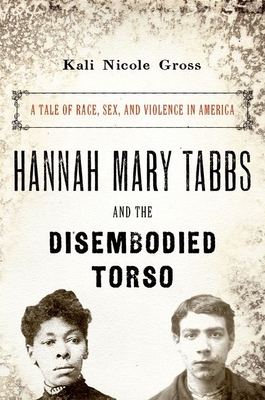 Hannah Mary Tabbs and the Disembodied Torso: A Tale of Race, Sex, and Violence in America
Hannah Mary Tabbs and the Disembodied Torso: A Tale of Race, Sex, and Violence in America
by Kali Nicole GrossOxford University Press, USA (Jan 28, 2016)
Read Detailed Book Description
Shortly after a dismembered torso was discovered by a pond outside Philadelphia in 1887, investigators homed in on two suspects: Hannah Mary Tabbs, a married, working-class, black woman, and George Wilson, a former neighbor whom Tabbs implicated after her arrest.
As details surrounding the shocking case emerged, both the crime and ensuing trial—which spanned several months—were featured in the national press. The trial brought otherwise taboo subjects such as illicit sex, adultery, and domestic violence in the black community to public attention. At the same time, the mixed race of the victim and one of his assailants exacerbated anxieties over the purity of whiteness in the post-Reconstruction era.
In Hannah Mary Tabbs and the Disembodied Torso, historian Kali Nicole Gross uses detectives’ notes, trial and prison records, local newspapers, and other archival documents to reconstruct this ghastly whodunit crime in all its scandalous detail. In doing so, she gives the crime context by analyzing it against broader evidence of police treatment of black suspects and violence within the black community.
A fascinating work of historical recreation, Hannah Mary Tabbs and the Disembodied Torso is sure to captivate anyone interested in true crime, adulterous love triangles gone wrong, and the racially volatile world of post-Reconstruction Philadelphia.
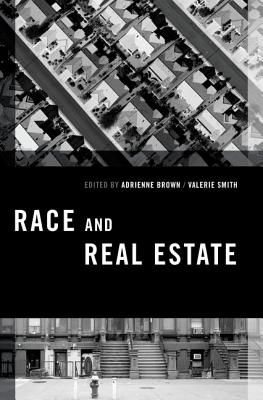 Race and Real Estate
Race and Real Estate
by Adrienne BrownOUP Us (Oct 28, 2015)
Read Detailed Book Description
Race and Real Estate brings together new work by architects, sociologists, legal scholars, and literary critics that qualifies and complicates traditional narratives of race, property, and citizenship in the United States. Rather than simply rehearsing the standard account of how blacks were historically excluded from homeownership, the authors of these essays explore how the raced history of property affects understandings of home and citizenship. While the narrative of race and real estate in America has usually been relayed in terms of institutional subjugation, dispossession, and forced segregation, the essays collected in this volume acknowledge the validity of these histories while presenting new perspectives on this story.
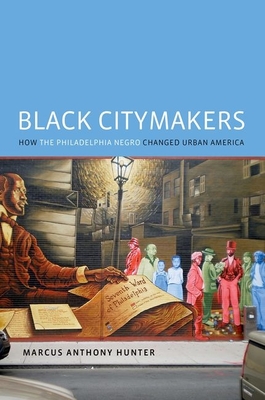 Black Citymakers: How the Philadelphia Negro Changed Urban America
Black Citymakers: How the Philadelphia Negro Changed Urban America
by Marcus Anthony HunterOxford University Press, USA (Apr 15, 2015)
Read Detailed Book Description
W.E.B. DuBois immortalized Philadelphia’s Black Seventh Ward neighborhood, one of America’s oldest urban black communities, in his 1899 sociological study The Philadelphia Negro. In the century after DuBois’s study, however, the district has been transformed into a largely white upper middle class neighborhood.
Black Citymakers revisits the Black Seventh Ward, documenting a century of banking and tenement collapses, housing activism, black-led anti-urban renewal mobilization, and post-Civil Rights political change from the perspective of the Black Seventh Warders. Drawing on historical, political, and sociological research, Marcus Hunter argues that black Philadelphians were by no means mere casualties of the large scale social and political changes that altered urban dynamics across the nation after World War II. Instead, Hunter shows that black Americans framed their own understandings of urban social change, forging dynamic inter- and intra-racial alliances that allowed them to shape their own migration from the old Black Seventh Ward to emergent black urban enclaves throughout Philadelphia. These Philadelphians were not victims forced from their homes - they were citymakers and agents of urban change.
Black Citymakers explores a century of socioeconomic, cultural, and political history in the Black Seventh Ward, creating a new understanding of the political agency of black residents, leaders and activists in twentieth century urban change.
 American Slavery: A Very Short Introduction (Very Short Introductions)
American Slavery: A Very Short Introduction (Very Short Introductions)
by Heather Andrea WilliamsOxford University Press (Nov 03, 2014)
Read Detailed Book Description
Europeans, Africans, and American Indians practiced slavery long before the first purchase of a captive African by a white land-owner in the American colonies; that, however, is the image of slavery most prevalent in the minds of Americans today. This Very Short Introduction begins with the Portuguese capture of Africans in the 1400s and traces the development of American slavery until its abolition following the Civil War. Historian Heather Andrea Williams draws upon the rich recent scholarship of numerous highly-regarded academics as well as an analysis of primary documents to explore the history of slavery and its effects on the American colonies and later the United States of America. Williams examines legislation that differentiated American Indians and Africans from Europeans as the ideology of white supremacy flourished and became an ingrained feature of the society. These laws reflected the contradiction of America’s moral and philosophical ideology that valorized freedom on one hand and justified the enslavement of a population deemed inferior on another. She explores the tense and often violent relationships between the enslaved and the enslavers, and between abolitionists and pro-slavery advocates as those who benefited from the institution fought to maintain and exert their power.
Williams is attentive to the daily labors that enslaved people performed, reminding readers that slavery was a system of forced labor with economic benefits that produced wealth for a new nation, all the while leaving an indelible mark on its history.
About the Series:
Oxford’s Very Short Introductions series offers concise and original introductions to a wide range of subjects—from Islam to Sociology, Politics to Classics, Literary Theory to History, and Archaeology to the Bible. Not simply a textbook of definitions, each volume in this series provides trenchant and provocative—yet always balanced and complete—discussions of the central issues in a given discipline or field. Every Very Short Introduction gives a readable evolution of the subject in question, demonstrating how the subject has developed and how it has influenced society. Eventually, the series will encompass every major academic discipline, offering all students an accessible and abundant reference library. Whatever the area of study that one deems important or appealing, whatever the topic that fascinates the general reader, the Very Short Introductions series has a handy and affordable guide that will likely prove indispensable.
 African American Religion
African American Religion
by Eddie S. Glaude Jr.Oxford University Press (Sep 24, 2014)
Read Detailed Book Description
Since the first African American denomination was established in Philadelphia in 1818, churches have gone beyond their role as spiritual guides in African American communities and have served as civic institutions, spaces for education, and sites for the cultivation of individuality and identities in the face of limited or non-existent freedom.
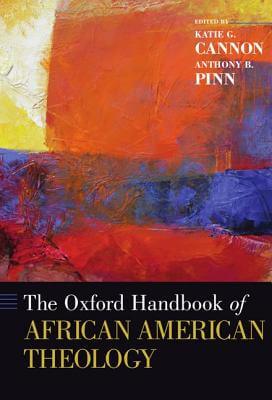 The Oxford Handbook Of African American Theology
The Oxford Handbook Of African American Theology
by Katie G. Cannon and Anthony B. PinnOxford University Press (Aug 01, 2014)
Read Detailed Book Description
Named an Honor Book for Nonfiction by the Black Caucus of the American Library Association
African American theology has a long and important history. With modern roots in the civil rights movements of the 1960s, African American theology has gone beyond issues of justice and social transformation to participate in broader dialogues of theological inquiry. The Oxford Handbook of African American Theology brings together leading scholars in the field to offer a critical and comprehensive analysis of this theological tradition in its many forms and contexts. Using an interdisciplinary approach, this Oxford Handbook examines the nature, structures, and functions of African American Theology. The volume surveys the field by highlighting its sources, doctrines, internal debates, current challenges, and future prospects in order to present key topics related to the wider palette of Black Religion in a sustained scholarly format. This formative collection presents current scholarship on African American Theology and scripture, eschatology, Christology, womanist theology, sexuality, ontology, the global economy, and much more. The contributors represent a diverse set of faith perspectives, adding to the layered discourses within the volume. These essays further important discussions on the pressing debates and challenges that shape black and womanist theologies.
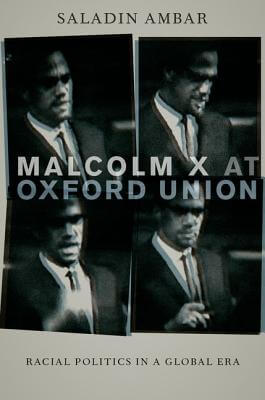 Malcolm X at Oxford Union: Racial Politics in a Global Era (Transgressing Boundaries: Studies in Black Politics and Black Communities)
Malcolm X at Oxford Union: Racial Politics in a Global Era (Transgressing Boundaries: Studies in Black Politics and Black Communities)
by Saladin AmbarOxford University Press (Feb 10, 2014)
Read Detailed Book Description
In 1964 Malcolm X was invited to debate at the Oxford Union Society at Oxford University. The topic of debate that evening was the infamous phrase from Barry Goldwater’s 1964 Republican Convention speech:"Extremism in the defense of liberty is no vice; moderation in the pursuit of justice is no virtue." At a time when Malcolm was traveling widely and advocating on behalf of blacks in America and other nations, his thirty minute speech at the Oxford Union stands out as one of the great addresses of the civil rights era.
Delivered just months before his assassination, the speech followed a period in which Malcolm had traveled throughout Africa and much of the Muslim world. The journey broadened his political thought to encompass decolonization, the revolutions underway in the developing world, and the relationship between American blacks and non-white populations across the globe-including England.
Facing off against debaters in one of world’s most elite institutions, he delivered a revolutionary message that tackled a staggering array of issues: the nature of national identity; US foreign policy in the developing world; racial politics at home; the experiences of black immigrants in England; and the nature of power in the contemporary world. It represents a moment when his thought had advanced to its furthest point, shedding the parochial concerns of previous years for an increasingly global and humanist approach to ushering in social change.
Set to publish near the fiftieth anniversary of his death, Malcolm X at Oxford Union will reshape our understanding not only of the man himself, but world politics both then and now.
 Black Ethnics: Race, Immigration, and the Pursuit of the American Dream
Black Ethnics: Race, Immigration, and the Pursuit of the American Dream
by Christina M. GreerOxford University Press (Jun 06, 2013)
Read Detailed Book Description
The steady immigration of black populations from Africa and the Caribbean over the past few decades has fundamentally changed the racial, ethnic, and political landscape in the United States. But how will these “new blacks” behave politically in America? Using an original survey of New York City workers and multiple national data sources, Christina M. Greer explores the political significance of ethnicity for new immigrant and native-born blacks. In an age where racial and ethnic identities intersect, intertwine, and interact in increasingly complex ways, Black Ethnics offers a powerful and rigorous analysis of black politics and coalitions in the post-Civil Rights era.
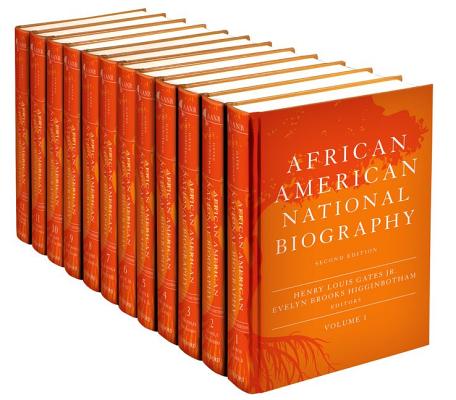 African American National Biography (Revised)
African American National Biography (Revised)
by Henry Louis Gates, Jr. and Evelyn Brooks HigginbothamOxford University Press (Mar 15, 2013)
Read Detailed Book Description
The African American National Biography presents history through a mosaic of the lives of thousands of individuals, illuminating the abiding influence of persons of African descent on the life of this nation from the arrival of Esteban in Spanish Florida in 1529 through to notable black citizens of the present day.
The original eight-volume set has now been expanded to twelve handsome volumes in its second edition, bringing the total number of lives profiled to nearly 5,000. The AANB continues to grow along with the field of African American biographical research, providing for continuous updates to the online edition, each entry written and signed by distinguished scholars. This is a remarkable achievement, a tenfold increase over the number of biographies contained in 2004’s award-winning and substantial African American Lives, and featuring such notable new entries as Cory Booker, C. Vivian Stringer, and Michelle Obama. In addition to Frederick Douglass, Booker T. Washington, W. E. B. Du Bois and Martin Luther King Jr., the AANB includes a wide range of African Americans from all time periods and all walks of life. Lives profiled include those already recognized as giants of black history, figures whose stories have never been told and that readers will be discovering for the first time, and living people who are shaping the era in which we now live. The names within are both famous and nearly-forgotten. In the words of AANB editor Henry Louis Gates, Jr., These stories, long buried in the dusty archives of history, will never be lost again. And that is what scholarship in the field of African American Studies should be all about. Tragic Soul-Life: W.E.B. Du Bois and the Moral Crisis Facing American Democracy
Tragic Soul-Life: W.E.B. Du Bois and the Moral Crisis Facing American Democracy
by Terrence L. JohnsonOxford University Press, USA (Jul 11, 2012)
Read Detailed Book Description
Contemporary debates on the role of religion in American public life ignore the overlap between religion and race in the formation of American democratic traditions and more often than not imagine democracy within the terrain of John Rawls’s political liberalism. This kind of political liberalism, which focuses on political commitments at the expense of our religious beliefs, fosters the necessary conditions to open historically closed doors to Black bodies, allows Blacks to sit at the King’s table, and creates the necessary safeguards for Black protest against discrimination within a constitutional democracy. By implication of its emphasis on rights and inclusion, political liberalism assumes that the presence of Black bodies signifies the materialization of a robust American democracy. However, political liberalism discounts the historical role of religion in forming and fashioning the nation’s construction of race.
Tragic Soul-Life argues that the collision between religion and politics during U.S. slavery and segregation created the fragments from which emerged a firm but shifting moral disdain for Blackness within the nation’s collective moral imagination. The very problem political liberals want to avoid—our comprehensive philosophy—is central to solving the political and economic problems facing Blacks.
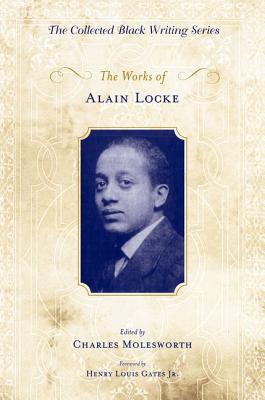 The Works Of Alain Locke
The Works Of Alain Locke
by Charles MolesworthOxford University Press (Jul 10, 2012)
Read Detailed Book Description
With the publication of The New Negro in 1925, Alain Locke introduced readers all over the U.S. to the vibrant world of African American thought. As an author, editor, and patron, Locke rightly earned the appellation "Godfather of the Harlem Renaissance." Yet, his intellectual contributions extend far beyond that single period of cultural history. Throughout his life he penned essays, on topics ranging from John Keats to Sigmund Freud, in addition to his trenchant social commentary on race and society.
The Works of Alain Locke provides the largest collection available of his brilliant essays, gathered from a career that spanned forty years. They cover an impressively broad field of subjects: philosophy, literature, the visual arts, music, the theory of value, race, politics, and multiculturalism. Alongside seminal works such as "The New Negro" the volume features essays like "The Ethics of Culture," "Apropos of Africa," and "Pluralism and Intellectual Democracy." Together, these writings demonstrate Locke’s standing as the leading African American thinker between W. E. B. Du Bois and Martin Luther King, Jr.
The foreword by Henry Louis Gates Jr. and the introduction by Henry Louis Gates, Jr.
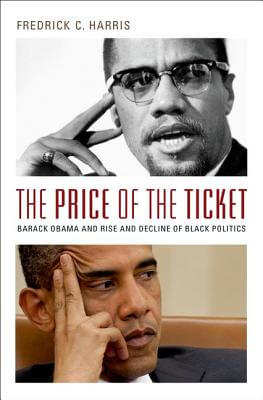 The Price Of The Ticket: Barack Obama And The Rise And Decline Of Black Politics (Transgressing Boundaries: Studies In Black Politics And Black Communities)
The Price Of The Ticket: Barack Obama And The Rise And Decline Of Black Politics (Transgressing Boundaries: Studies In Black Politics And Black Communities)
by Fredrick HarrisOxford University Press (Jun 15, 2012)
Read Detailed Book Description
The historical significance of Barack Obama’s triumph in the presidential election of 2008 scarcely requires comment. Yet it contains an irony: he won a victory as an African American only by denying that he should discuss issues that target the concerns of African Americans. Obama’s very success, writes Fredrick Harris, exacted a heavy cost on black politics.
In The Price of the Ticket, Harris puts Obama’s career in the context of decades of black activism, showing how his election undermined the very movement that made it possible. The path to his presidency began just before passage of the 1965 Voting Rights Act, when black leaders began to discuss strategies to make the most of their new access to the ballot. Some argued that black voters should organize into a cohesive, independent bloc to promote both targeted and universal polices; others urged a more race-neutral approach, working together with other racial minorities as well as like-minded whites. This has been the fundamental divide within black politics ever since. At first, the gap did not seem serious. But the post-civil-rights era has accelerated a shift towards race-neutral politics. Obama made a point of distancing himself from older race-conscious black leaders, such as Jesse Jackson- and leaders of the Congressional Black Caucus-even though, as Harris shows, he owes much to Jackson’s earlier campaigns for the White House. Unquestionably Obama’s approach won support among whites, but Harris finds the results troublesome. The social problems targeted by an earlier generation of black politicians—racial disparities in income and education, stratospheric incarceration and unemployment rates—all persist, yet Obama’s election, ironically, marginalized those issues, keeping them off the political agenda. Meanwhile, the civil-rights movement’s militancy to attack the vestiges of racial inequality is fading.
Written by one of America’s leading scholars of race and politics, The Price of the Ticket will reshape our understanding of the rise of Barack Obama and the decline of a politics dedicated to challenging racial inequality head on.
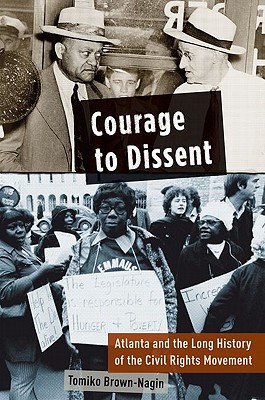 Courage to Dissent: Atlanta and the Long History of the Civil Rights Movement
Courage to Dissent: Atlanta and the Long History of the Civil Rights Movement
by Tomiko Brown-NaginOxford University Press (Feb 09, 2011)
Read Detailed Book Description
In this Bancroft Prize-winning history of the Civil Rights movement in Atlanta from the end of World War II to 1980, Tomiko Brown-Nagin shows that long before "black power" emerged and gave black dissent from the mainstream civil rights agenda a name, African Americans in Atlanta questioned the meaning of equality and the steps necessary to obtain a share of the American dream. This groundbreaking book uncovers the activism of visionaries—both well-known figures and unsung citizens—from across the ideological spectrum who sought something different from, or more complicated than, "integration." Local activists often played leading roles in carrying out the agenda of the NAACP, but some also pursued goals that differed markedly from those of the venerable civil rights organization. Brown-Nagin documents debates over politics, housing, public accommodations, and schools. Exploring the complex interplay between the local and national, between lawyers and communities, between elites and grassroots, and between middle-class and working-class African Americans, Courage to Dissent transforms our understanding of the Civil Rights era.
 I Am Your Sister: Collected And Unpublished Writings Of Audre Lorde (Transgressing Boundaries: Studies In Black Politics And Black Communities)
I Am Your Sister: Collected And Unpublished Writings Of Audre Lorde (Transgressing Boundaries: Studies In Black Politics And Black Communities)
by Audre LordeOxford University Press (Apr 21, 2009)
Read Detailed Book Description
Audre Lorde was not only a famous poet; she was also one of the most important radical black feminists of the past century. Her writings and speeches grappled with an impressive broad list of topics, including sexuality, race, gender, class, disease, the arts, parenting, and resistance, and they have served as a transformative and important foundation for theorists and activists in considering questions of power and social justice. Lorde embraced difference, and at each turn she emphasized the importance of using it to build shared strength among marginalized communities.
I Am Your Sister is a collection of Lorde’s non-fiction prose, written between 1976 and 1990, and it introduces new perspectives on the depth and range of Lorde’s intellectual interests and her commitments to progressive social change. Presented here, for the first time in print, is a major body of Lorde’s speeches and essays, along with the complete text of A Burst of Light and Lorde’s landmark prose works Sister Outsider and The Cancer Journals. Together, these writings reveal Lorde’s commitment to a radical course of thought and action, situating her works within the women’s, gay and lesbian, and African American Civil Rights movements. They also place her within a continuum of black feminists, from Sojourner Truth, to Anna Julia Cooper, Amy Jacques Garvey, Lorraine Hansberry, and Patricia Hill Collins. I Am Your Sister concludes with personal reflections from Alice Walker, Gloria Joseph, Johnnetta Betsch Cole, Beverly Guy-Sheftall, and bell hooks on Lorde’s political and social commitments and the indelibility of her writings for all who are committed to a more equitable society.
 Harlem Renaissance Lives: From the African American National Biography
Harlem Renaissance Lives: From the African American National Biography
by Henry Louis Gates, Jr. and Evelyn Brooks HigginbothamOxford University Press (Mar 27, 2009)
Read Detailed Book Description
The Harlem Renaissance is the best known and most widely studied cultural movement in African American history. Now, in Harlem Renaissance Lives, esteemed scholars Henry Louis Gates Jr. and Evelyn Brooks Higginbotham have selected 300 key biographical entries culled from the eight-volume African American National Biography, providing an authoritative who’s who of this seminal period. Here readers will find engagingly written and authoritative articles on notable African Americans who made significant contributions to literature, drama, music, visual art, or dance, including such central figures as poet Langston Hughes, novelist Zora Neale Hurston, aviator Bessie Coleman, blues singer Ma Rainey, artist Romare Bearden, dancer Josephine Baker, jazzman Louis Armstrong, and the intellectual giant W. E. B. Du Bois. Also included are biographies of people like the Scottsboro Boys, who were not active within the movement but who nonetheless profoundly affected the artistic and political statements that came from Harlem Renaissance figures. The volume will also feature a preface by the editors, an introductory essay by historian Cary D. Wintz, and 75 illustrations.
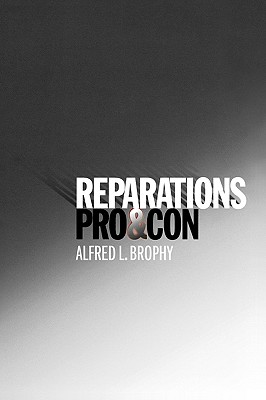 Reparations: Pro & Con
Reparations: Pro & Con
by Alfred L. BrophyOxford University Press, USA (May 12, 2008)
Read Detailed Book Description
“A book about reparations and its contentious qualities that is a must-read for all. If you want to know the essence of the debate, this book is for you.”
—Charles K. Ogletree, Jr., Harvard Law School
Today, the debate over reparations—whether African-Americans should be compensated for decades of racial subjugation—stands as the most racially divisive issue in American politics. In this short, definitive work, Alfred L. Brophy, a leading expert on racial violence, traces the reparations issue from the 1820s to the present in order to assess the arguments on both sides of the current debate. Taking us inside litigation and legislatures past and present; examining failed and successful lawsuits; and exploring reparations actions by legislatures, newspapers, schools, businesses, and truth commissions, this book offers a valuable historical and legal perspective for reparations advocates and critics alike.
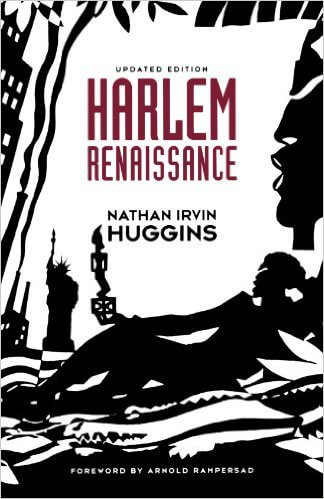 Harlem Renaissance
Harlem Renaissance
by Nathan HugginsOxford University Press (May 02, 2007)
Read Detailed Book Description
A finalist for the 1972 National Book Award, hailed by The New York Times Book Review as "brilliant" and "provocative," Nathan Huggins’ Harlem Renaissance is a milestone in the study of African-American life and culture.
A superb portrait of one of the signal episodes in African-American and American history, this volume offers a brilliant account of the creative explosion in Harlem during these pivotal years. Blending the fields of history, literature, music, psychology, and folklore, Huggins illuminates the thought and writing of such key figures as Alain Locke, James Weldon Johnson, and W.E.B. DuBois and provides sharp-eyed analyses of the poetry of Claude McKay, Countee Cullen, and Langston Hughes. But the main objective for Huggins, throughout the book, is always to achieve a better understanding of America as a whole. As Huggins himself noted, he didn’t want Harlem in the 1920s to be the focus of the book so much as a lens through which readers might see how this one moment in time sheds light on the American character and culture, not just in Harlem but across the nation. He strives throughout to link the work of poets and novelists not only to artists working in other genres and media but also to economic, historical, and cultural forces in the culture at large.
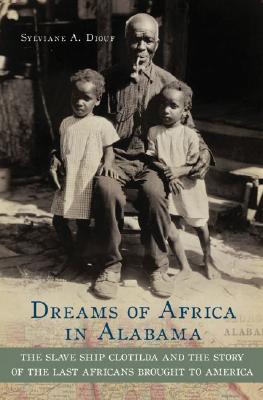 Dreams of Africa in Alabama: The Slave Ship Clotilda and the Story of the Last Africans Brought to America
Dreams of Africa in Alabama: The Slave Ship Clotilda and the Story of the Last Africans Brought to America
by Sylviane A. DioufOxford University Press (Mar 09, 2007)
Read Detailed Book Description
In the summer of 1860, more than fifty years after the United States legally abolished the international slave trade, 110 men, women, and children from Benin and Nigeria were brought ashore in Alabama under cover of night. They were the last recorded group of Africans deported to the United States as slaves. Timothy Meaher, an established Mobile businessman, sent the slave ship, the Clotilda , to Africa, on a bet that he could "bring a shipful of niggers right into Mobile Bay under the officers’ noses." He won the bet.
This book reconstructs the lives of the people in West Africa, recounts their capture and passage in the slave pen in Ouidah, and describes their experience of slavery alongside American-born enslaved men and women. After emancipation, the group reunited from various plantations, bought land, and founded their own settlement, known as African Town. They ruled it according to customary African laws, spoke their own regional language and, when giving interviews, insisted that writers use their African names so that their families would know that they were still alive.
The last survivor of the Clotilda died in 1935, but African Town is still home to a community of Clotilda descendants. The publication of Dreams of Africa in Alabama marks the 200th anniversary of the abolition of the transatlantic slave trade.
Winner of the Wesley-Logan Prize of the American Historical Association (2007)
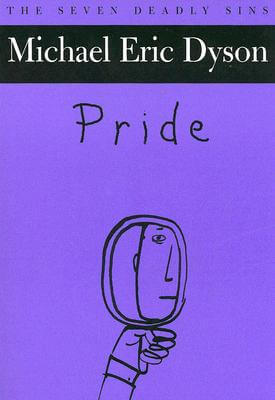 Pride: The Seven Deadly Sins (New York Public Library Lectures in Humanities)
Pride: The Seven Deadly Sins (New York Public Library Lectures in Humanities)
by Michael Eric DysonOxford University Press (Aug 23, 2006)
Read Detailed Book Description
Of the seven deadly sins, pride is the only one with a virtuous side. It is certainly a good thing to have pride in one’s country, in one’s community, in oneself. But when taken too far, as Michael Eric Dyson shows in Pride, these virtues become deadly sins. Dyson, named by Ebony magazine as one of the 100 most influential African Americans, here looks at the many dimensions of pride. Ranging from Augustine and Aquinas, MacIntyre and Hauerwas, to Niebuhr and King, Dyson offers a thoughtful, multifaceted look at this "virtuous vice." He probes the philosophical and theological roots of pride in examining its transformation in Western culture. Dyson discusses how black pride keeps blacks from being degraded and excluded by white pride, which can be invisible, unspoken, but nonetheless very powerful. Dyson also offers a moving glimpse into the teachers and books that shaped his personal pride and vocation. Dyson also looks at less savory aspects of national pride. Since 9/11, he notes, we have had to close ranks. But the collective embrace of all things American, to the exclusion of anything else, has taken the place of a much richer, much more enduring, much more profound version of love of country. This unchecked pride asserts the supremacy of America above all others—elevating our national beliefs above any moral court in the world—and attacking critics of American foreign policy as unpatriotic and even traitorous. Hubris, temerity, arrogance—the unquestioned presumption that one’s way of life defines how everyone else should live—pride has many destructive manifestations. In this engaging and energetic volume, Michael Eric Dyson, one of the nation’s foremost public intellectuals, illuminates this many-sided human emotion, one that can be an indispensable virtue or a deadly sin.
 Black, White, and Indian: Race and the Unmaking of an American Family
Black, White, and Indian: Race and the Unmaking of an American Family
by Claudio SauntOxford University Press (Aug 01, 2006)
Read Detailed Book Description
Deceit, compromise, and betrayal were the painful costs of becoming American for many families. For people of Indian, African, and European descent living in the newly formed United States, the most personal and emotional choices—to honor a friendship or pursue an intimate relationship—were often necessarily guided by the harsh economic realities imposed by the country’s racial hierarchy. Few families in American history embody this struggle to survive the pervasive onslaught of racism more than the Graysons.
Like many other residents of the eighteenth-century Native American South, where Black-Indian relations bore little social stigma, Katy Grayson and her brother William—both Creek Indians—had children with partners of African descent. As the plantation economy began to spread across their native land soon after the birth of the American republic, however, Katy abandoned her black partner and children to marry a Scottish-Creek man. She herself became a slaveholder, embracing slavery as a public display of her elevated place in America’s racial hierarchy. William, by contrast, refused to leave his black wife and their several children and even legally emancipated them.
Traveling separate paths, the Graysons survived the invasion of the Creek Nation by U.S. troops in 1813 and again in 1836 and endured the Trail of Tears, only to confront each other on the battlefield during the Civil War. Afterwards, they refused to recognize each other’s existence. In 1907, when Creek Indians became U.S. citizens, Oklahoma gave force of law to the family schism by defining some Graysons as white, others as black. Tracking a full five generations of the Grayson family and basing his account in part on unprecedented access to the forty-four volume diary of G. W. Grayson, the one-time principal chief of the Creek Nation, Claudio Saunt tells not only of America’s past, but of its present, shedding light on one of the most contentious issues in Indian politics, the role of "blood" in the construction of identity.
Overwhelmed by the racial hierarchy in the United States and compelled to adopt the very ideology that oppressed them, the Graysons denied their kin, enslaved their relatives, married their masters, and went to war against each other. Claudio Saunt gives us not only a remarkable saga in its own right but one that illustrates the centrality of race in the American experience.
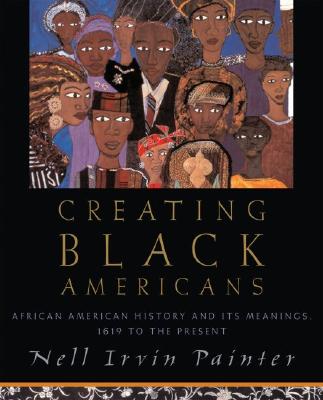 Creating Black Americans: African American History and Its Meanings, 1619 to the Present
Creating Black Americans: African American History and Its Meanings, 1619 to the Present
by Nell Irvin PainterOxford University Press (Nov 01, 2005)
Read Detailed Book Description
Here is a magnificent account of a past rich in beauty and creativity, but also in tragedy and trauma. Eminent historian Nell Irvin Painter blends a vivid narrative based on the latest research with a wonderful array of artwork by African American artists, works which add a new depth to our understanding of black history.
Painter offers a history written for a new generation of African Americans, stretching from life in Africa before slavery to today’s hip-hop culture. The book describes the staggering number of Africans—over ten million—forcibly transported to the New World, most doomed to brutal servitude in Brazil and the Caribbean. Painter looks at the free black population, numbering close to half a million by 1860 (compared to almost four million slaves), and provides a gripping account of the horrible conditions of slavery itself. The book examines the Civil War, revealing that it only slowly became a war to end slavery, and shows how Reconstruction, after a promising start, was shut down by terrorism by white supremacists. Painter traces how through the long Jim Crow decades, blacks succeeded against enormous odds, creating schools and businesses and laying the foundations of our popular culture. We read about the glorious outburst of artistic creativity of the Harlem Renaissance, the courageous struggles for Civil Rights in the 1960s, the rise and fall of Black Power, the modern hip-hop movement, and two black Secretaries of State. Painter concludes that African Americans today are wealthier and better educated, but the disadvantaged are as vulnerable as ever.
Painter deeply enriches her narrative with a series of striking works of art—more than 150 in total, most in full color—works that profoundly engage with black history and that add a vital dimension to the story, a new form of witness that testifies to the passion and creativity of the African-American experience.
* Among the dozens of artists featured are Romare Bearden, Elizabeth Catlett, Beauford Delaney, Jacob Lawrence, and Kara Walker
* Filled with sharp portraits of important African Americans, from Olaudah Equiano (one of the first African slaves to leave a record of his captivity) and Toussaint L’Ouverture (who led the Haitian revolution), to Harriet Tubman and Sojourner Truth, to Martin Luther King, Jr. and Malcolm X
 The Oxford Anthology of African-American Poetry
The Oxford Anthology of African-American Poetry
by Arnold Rampersad and Hilary HerboldOxford University Press (Oct 01, 2005)
Read Detailed Book Description
For over two centuries, black poets have created verse that captures the sorrows, joys, and triumphs of the African-American experience. Reflecting their variety of visions and styles, The Oxford Anthology of African-American Poetry aims to offer nothing less than a definitive literary portrait of a people.
Here are poems by writers as different as Paul Laurence Dunbar and W.E.B. Du Bois; Countee Cullen and Langston Hughes; Gwendolyn Brooks and Amiri Baraka; Rita Dove and Harryette Mullen; Yusef Komunyakaa and Nathaniel Mackey. Acclaimed as a biographer and editor, Arnold Rampersad groups these poems as meditations on key issues in black culture, including the idea of Africa; the South; slavery; protest and resistance; the black man, woman, and child; sexuality and love; music and religion; spirituality; death and transcendence.
With their often starkly contrasting visions and styles, these poets illuminate some of the more controversial and intimate aspects of the black American experience. Poetry here is not only or mainly a vehicle of protest but also an exploration of the complex and tender subtleties of black culture. One section offers tributes to celebrated leaders such as Sojourner Truth and Malcolm X, but many more reflect the heroism compelled by everyday black life. The variety of poetic forms and language captures the brilliant essence of English as mastered by black Americans dedicated to the art of poetry.
Loving and yet also honest and unsparing, The Oxford Anthology of African-American Poetry is for readers who treasure both poetry and the genius of black America.
 Keepin’ It Real: School Success Beyond Black and White (Transgressing Boundaries: Studies in Black Politics and Black Communities)
Keepin’ It Real: School Success Beyond Black and White (Transgressing Boundaries: Studies in Black Politics and Black Communities)
by Prudence L. CarterOxford University Press (Sep 15, 2005)
Read Detailed Book Description
Why are so many African American and Latino students performing less well than their Asian and White peers in classes and on exams? Researchers have argued that African American and Latino students who rebel against "acting white" doom themselves to lower levels of scholastic, economic, and social achievement. In Keepin’ It Real: School Success beyond Black and White, Prudence Carter turns the conventional wisdom on its head arguing that what is needed is a broader recognition of the unique cultural styles and practices that non-white students bring to the classroom. Based on extensive interviews and surveys of students in New York, she demonstrates that the most successful negotiators of our school systems are the multicultural navigators, culturally savvy teens who draw from multiple traditions, whether it be knowledge of hip hop or of classical music, to achieve their high ambitions. Keepin’ it Real refutes the common wisdom about teenage behavior and racial difference, and shows how intercultural communication, rather than assimilation, can help close the black-white gap.
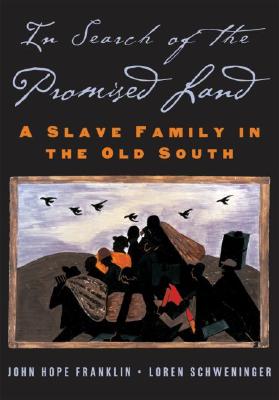 In Search of the Promised Land: A Slave Family in the Old South (New Narratives in American History)
In Search of the Promised Land: A Slave Family in the Old South (New Narratives in American History)
by John Hope FranklinOxford University Press (Sep 01, 2005)
Read Detailed Book Description
The matriarch of a remarkable African American family, Sally Thomas went from being a slave on a tobacco plantation, to a "virtually free" slave who ran her own business and purchased one of her sons out of bondage. In Search of the Promised Land offers a vivid portrait of the extended Thomas-Rapier family and of the life of slaves before the Civil War.
Based on family letters as well as an autobiography by one of Thomas’ sons, this remarkable piece of detective work follows a singular group as they walk the boundary between slave and free, traveling across the country in search of a "promised land" where African Americans would be treated with respect. Their record of these journeys provides a vivid picture of antebellum America, stretching from New Orleans to St. Louis, from the Overland Trail to the California Gold Rush, and from Civil War battles to steamboat adventures. John Hope Franklin and Loren Schweninger weave a compelling narrative that illuminates the larger themes of slavery and freedom. To a remarkable degree, this small family experienced the full gamut of slavery, witnessing everything from the breakup of slave families, brutal punishment, and runaways, to miscegenation, insurrection panics, and slave patrols. They also illuminate the hidden lives of " virtually free" slaves, who maintained close relationships with whites, maneuvered within the system, and gained a large measure of autonomy.
The Thomas-Rapiers were keen observers of the human condition. Through the eyes of this exceptional family and the indomitable black woman who held them together, we witness aspects of human bondage otherwise hidden from view.
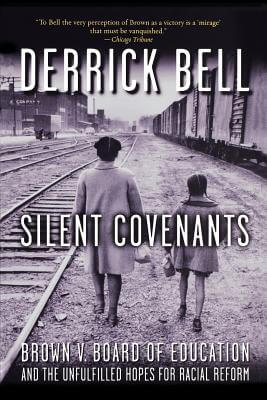 Silent Covenants: Brown v. Board of Education and the Unfulfilled Hopes for Racial Reform
Silent Covenants: Brown v. Board of Education and the Unfulfilled Hopes for Racial Reform
by Derrick BellOxford University Press (Aug 18, 2005)
Read Detailed Book Description
When the landmark Supreme Court case of Brown vs. Board of Education was handed down in 1954, many civil rights advocates believed that the decision, which declared public school segregation unconstitutional, would become the Holy Grail of racial justice. Fifty years later, despite its legal irrelevance and the racially separate and educationally ineffective state of public schooling for most black children, Brown is still viewed by many as the perfect precedent.
Here, Derrick Bell shatters the shining image of this celebrated ruling. He notes that, despite the onerous burdens of segregation, many black schools functioned well and racial bigotry had not rendered blacks a damaged race. He maintains that, given what we now know about the pervasive nature of racism, the Court should have determined instead to rigorously enforce the "equal" component of the "separate but equal" standard. Racial policy, Bell maintains, is made through silent covenants—unspoken convergences of interest and involuntary sacrifices of rights—that ensure that policies conform to priorities set by policy-makers. Blacks and whites are the fortuitous winners or losers in these unspoken agreements. The experience with Brown, Bell urges, should teach us that meaningful progress in the quest for racial justice requires more than the assertion of harms. Strategies must recognize and utilize the interest-convergence factors that strongly influence racial policy decisions.
In Silent Covenants, Bell condenses more than four decades of thought and action into a powerful and eye-opening book.
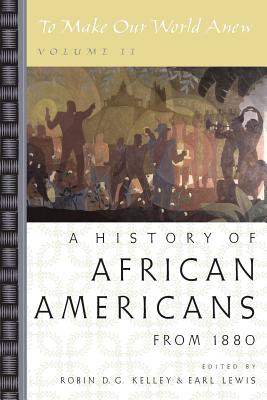 To Make Our World Anew: Volume II: A History of African Americans Since 1880
To Make Our World Anew: Volume II: A History of African Americans Since 1880
by Robin D. G. KelleyOxford University Press (Apr 28, 2005)
Read Detailed Book Description
The two volumes of Kelley and Lewis’s To Make Our World Anew integrate the work of eleven leading historians into the most up-to-date and comprehensive account available of African American history, from the first Africans brought as slaves into the Americas, right up to today’s black filmmakers and politicians.
This second volume covers the crucial post-Reconstruction years and traces the migration of blacks to the major cities. It describes the remarkable birth of the Harlem Renaissance, the hardships of the Great Depression, and the service of African Americans in World War II.
Readers witness the struggle for Civil Rights in the 1950s and ’60s and finally, the emergence of today’s black middle class. Here is a panoramic view of African-American life, rich in gripping first-person accounts and short character sketches that invite readers to relive history as African Americans have experienced it.
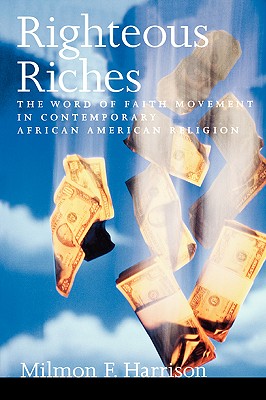 Righteous Riches: The Word of Faith Movement in Contemporary African American Religion
Righteous Riches: The Word of Faith Movement in Contemporary African American Religion
by Milmon F. HarrisonOxford University Press (Mar 03, 2005)
Read Detailed Book Description
Does God want us to be wealthy? Many people believe that God offers not only eternal joy in the hereafter but also material blessings in the here and now. Other Christians see this "prosperity theology," as nothing more than vulgar materialism, incompatible with orthodox Christianity. In Righteous Riches, Milmon F. Harrison examines the Word of Faith movement, an independent, non-denominational Christian movement that preaches the so-called "health and wealth gospel."
The Word of Faith movement is an international network loosely bound by a basic doctrine called the "Faith Message," which teaches that it is God’s will for Christians to be prosperous, successful, and healthy in the present life. Drawing on his personal experiences as a former insider and in-depth interviews with members, Harrison takes us inside the movement, revealing what it is like to belong, and how people accept, reject, and reshape Word of Faith doctrines to fit their own lives. Although the movement is not exclusively African American, many of its most prominent and recognized leaders are African American ministers with large congregations and national television audiences. Analyzing the movement’s appeal to African Americans, Harrison argues that, because of their history of oppression and discrimination, African American religious institutions have always had to address the material—as well as spiritual—concerns of their members. The Word of Faith Movement, he says, is one of several prosperity movements that resonate strongly with African Americans. Situating the movement in the contexts of both contemporary American religion and the history of the Black Church, Righteous Riches offers a fascinating look at a quintessentially American phenomenon.
 Defining Creole
Defining Creole
by John McWhorterOxford University Press (Feb 03, 2005)
Read Detailed Book Description
A conventional wisdom among creolists is that creole is a sociohistorical term only: that creole languages share a particular history entailing adults rapidly acquiring a language usually under conditions of subordination, but that structurally they are indistinguishable from other languages. The articles by John H. McWhorter collected in this volume demonstrate that this is in fact untrue.
Creole languages, while complex and nuanced as all human languages are, are delineable from older languages as the result of their having come into existence only a few centuries ago. Then adults learn a language under untutored conditions, they abbreviate its structure, focusing upon features vital to communication and shaving away most of the features useless to communication that bedevil those acquiring the language non-natively. When they utilize their rendition of the language consistently enough to create a brand-new one, this new creation naturally evinces evidence of its youth: specifically, a much lower degree of the random accretions typical in older languages, which only develop over vast periods of time.
The articles constitute a case for this thesis based on both broad, cross-creole ranges of data and focused expositions referring to single creole languages. The book presents a general case for a theory of language contact and creolization in which not only transfer from source languages but also structural reduction plays a central role, based on facts whose marginality of address in creole studies has arisen from issues sociopolitical as well as scientific. For several decades the very definition of the term creole has been elusive even among creole specialists. This book attempts to forge a path beyond the inter- and intra-disciplinary misunderstandings and stalemates that have resulted from this, and to demonstrate the place that creoles might occupy in other linguistic subfields, including typology, language contact, and syntactic theory.
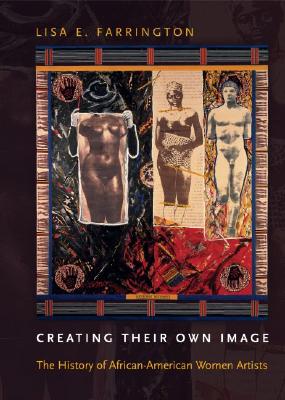 Creating Their Own Image: The History of African-American Women Artists
Creating Their Own Image: The History of African-American Women Artists
by Lisa E. FarringtonOxford University Press (Dec 30, 2004)
Read Detailed Book Description
Creating Their Own Image marks the first comprehensive history of African-American women artists, from slavery to the present day. Using an analysis of stereotypes of Africans and African-Americans in western art and culture as a springboard, Lisa E. Farrington here richly details hundreds of important works—many of which deliberately challenge these same identity myths, of the carnal Jezebel, the asexual Mammy, the imperious Matriarch—in crafting a portrait of artistic creativity unprecedented in its scope and ambition. In these lavishly illustrated pages, some of which feature images never before published, we learn of the efforts of Elizabeth Keckley, fashion designer to Mary Todd Lincoln; the acclaimed sculptor Edmonia Lewis, internationally renowned for her neoclassical works in marble; and the artist Nancy Elizabeth Prophet and her innovative teaching techniques. We meet Laura Wheeler Waring who portrayed women of color as members of a socially elite class in stark contrast to the prevalent images of compliant maids, impoverished malcontents, and exotics "others" that proliferated in the inter-war period. We read of the painter Barbara Jones-Hogu’s collaboration on the famed Wall of Respect, even as we view a rare photograph of Hogu in the process of painting the mural. Farrington expertly guides us through the fertile period of the Harlem Renaissance and the "New Negro Movement," which produced an entirely new crop of artists who consciously imbued their work with a social and political agenda, and through the tumultuous, explosive years of the civil rights movement. Drawing on revealing interviews with numerous contemporary artists, such as Betye Saar, Faith Ringgold, Nanette Carter, Camille Billops, Xenobia Bailey, and many others, the second half of Creating Their Own Image probes more recent stylistic developments, such as abstraction, conceptualism, and post-modernism, never losing sight of the struggles and challenges that have consistently influenced this body of work. Weaving together an expansive collection of artists, styles, and periods, Farrington argues that for centuries African-American women artists have created an alternative vision of how women of color can, are, and might be represented in American culture. From utilitarian objects such as quilts and baskets to a wide array of fine arts, Creating Their Own Image serves up compelling evidence of the fundamental human need to convey one’s life, one’s emotions, one’s experiences, on a canvas of one’s own making.
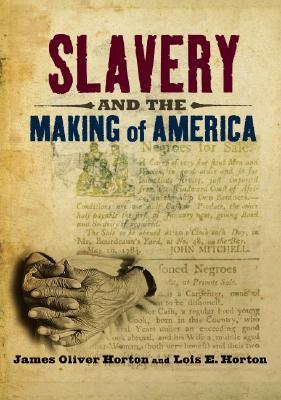 Slavery and the Making of America
Slavery and the Making of America
by James Oliver Horton and Lois E. HortonOxford University Press (Nov 01, 2004)
Read Detailed Book Description
The history of slavery is central to understanding the history of the United States. Slavery and the Making of America offers a richly illustrated, vividly written history that illuminates the human side of this inhumane institution, presenting it largely through stories of the slaves themselves.
Readers will discover a wide ranging and sharply nuanced look at American slavery, from the first Africans brought to British colonies in the early seventeenth century to the end of Reconstruction. The authors document the horrors of slavery, particularly in the deep South, and describe the slaves’ valiant struggles to free themselves from bondage. There are dramatic tales of escape by slaves such as William and Ellen Craft and Dred Scott’s doomed attempt to win his freedom through the Supreme Court. We see how slavery engendered violence in our nation, from bloody confrontations that broke out in American cities over fugitive slaves, to the cataclysm of the Civil War. The book is also filled with stories of remarkable African Americans like Sergeant William H. Carney, who won the Congressional Medal of Honor for his bravery at the crucial assault on Fort Wagner during the Civil War, and Benjamin "Pap" Singleton, a former slave who led freed African Americans to a new life on the American frontier. Filled with absorbing and inspirational accounts highlighted by more than one hundred pictures and illustrations, Slavery and the Making of America is a gripping account of the struggles of African Americans against the iniquity of slavery.
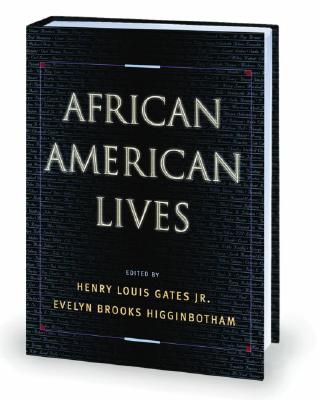 African American Lives
African American Lives
by Henry Louis Gates, Jr. and Evelyn Brooks HigginbothamOxford University Press (Apr 29, 2004)
Read Detailed Book Description
African American Lives offers up-to-date, authoritative biographies of some 600 noteworthy African Americans. These 1,000-3,000 word biographies, selected from over five thousand entries in the forthcoming eight-volume African American National Biography, illuminate African-American history
through the immediacy of individual experience. From Esteban, the earliest known African to set foot in North America in 1528, right up to the continuing careers of Venus and Serena Williams, these stories of the renowned and the near forgotten give us a new view of American history. Our past is
revealed from personal perspectives that in turn inspire, move, entertain, and even infuriate the reader. Subjects include slaves and abolitionists, writers, politicians, and business people, musicians and dancers, artists and athletes, victims of injustice and the lawyers, journalists, and civil
rights leaders who gave them a voice. Their experiences and accomplishments combine to expose the complexity of race as an overriding issue in America’s past and present.
Prize.
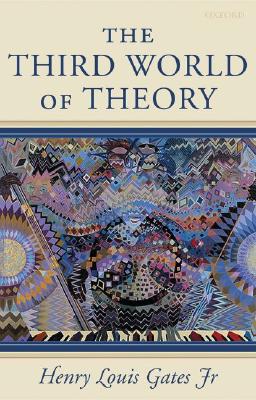 The Third World of Theory (Clarendon Lectures in English Literature)
The Third World of Theory (Clarendon Lectures in English Literature)
by Henry Louis Gates, Jr.Oxford University Press (Jan 01, 2004)
Read Detailed Book Description
The Third World of Theory, originally given as the Clarendon Lectures in English at Oxford University, is an important contribution to Cultural Studies from one of its leading critics. Beginning with Edmund Burke and eighteenth-century Rationalism, Henry Louis Gates, Jr. discusses a wide range of key topics in contemporary Cultural and Afro-American Studies, from Raymond Williams and issues of identity, to Frantz Fanon’s importance as a global theorist, and Isaiah Berlin’s essay on pluralism.
Gates is a genial and energetic guide throughout, elegantly combining distinguished scholarship and involved discussion with his own personal experiences (we learn, for instance of Gates’ own encounter with James Baldwin and his journey across France with the famous actress-singer Josephine Baker). The culture wars have presented us with a surfeit of either-ors—tradition versus modernity; Eurocentrism versus Afrocentricism; communitarianism versus individualism. Gates’s powerful conclusion points us away from these banal dichotomies and appeals for a multiculturalism in which differences are accepted and celebrated. This volume is introduced by the preeminent cultural theorist Homi Bhabha.
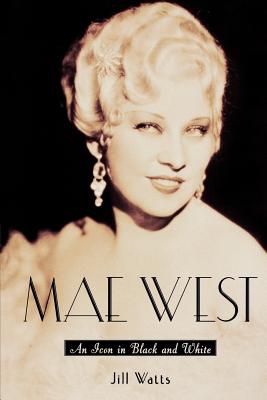 Mae West: An Icon In Black And White
Mae West: An Icon In Black And White
by Jill WattsOxford University Press (Apr 17, 2003)
Read Detailed Book Description
"Why don’t you come up and see me sometime?" Mae West invited and promptly captured the imagination of generations. Even today, years after her death, the actress and author is still regarded as the pop archetype of sexual wantonness and ribald humor. But who was this saucy starlet, a woman who was controversial enough to be jailed, pursued by film censors and banned from the airwaves for the revolutionary content of her work, and yet would ascend to the status of film legend?
Sifting through previously untapped sources, author Jill Watts unravels the enigmatic life of Mae West, tracing her early years spent in the Brooklyn subculture of boxers and underworld figures, and follows her journey through burlesque, vaudeville, Broadway and, finally, Hollywood, where she quickly became one of the big screen’s most popular—and colorful—stars. Exploring West’s penchant for contradiction and her carefully perpetuated paradoxes, Watts convincingly argues that Mae West borrowed heavily from African American culture, music, dance and humor, creating a subversive voice for herself by which she artfully challenged society and its assumptions regarding race, class and gender. Viewing West as a trickster, Watts demonstrates that by appropriating for her character the black tradition of double-speak and "signifying," West also may have hinted at her own African-American ancestry and the phenomenon of a black woman passing for white.
This absolutely fascinating study is the first comprehensive, interpretive account of Mae West’s life and work. It reveals a beloved icon as a radically subversive artist consciously creating her own complex image.
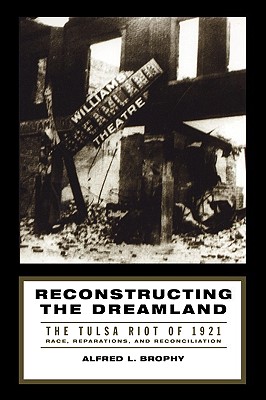 Reconstructing the Dreamland: The Tulsa Riot of 1921: Race, Reparations, and Reconciliation
Reconstructing the Dreamland: The Tulsa Riot of 1921: Race, Reparations, and Reconciliation
by Alfred L. BrophyOxford University Press (Apr 10, 2003)
Read Detailed Book Description
The 1921 Tulsa Race Riot was the country’s bloodiest civil disturbance of the century. Thirty city blocks were burned to the ground, perhaps 150 died, and the prosperous black community of Greenwood, Oklahoma, was turned to rubble.
Recovers a largely forgotten history of black activism in one of the grimmest periods of race relations…. Linking history with advocacy, Brophy also offers a reasoned defense of reparations for the riot’s victims.—Washington Post Book World
 Thinking It Through: An Introduction to Contemporary Philosophy
Thinking It Through: An Introduction to Contemporary Philosophy
by Kwame Anthony AppiahOxford University Press (Mar 06, 2003)
Read Detailed Book Description
Here is a thorough, vividly written introduction to contemporary philosophy and some of the most crucial questions of human existence: the nature of mind and knowledge, the status of moral claims, the existence of God, the role of science, and the mysteries of language, among them.
In Thinking It Through, esteemed philosopher Kwame Anthony Appiah shows us what it means to "do" philosophy in our time and why it should matter to anyone who wishes to live a more thoughtful life. Opposing the common misconceptions that being a philosopher means espousing a set of philosophical beliefs, or being a follower of a particular thinker, Appiah argues that "the result of philosophical exploration is not the end of inquiry in a settled opinion, but a mind resting more comfortably among many possibilities, or else the reframing of the question, and a new inquiry." Thinking It Through is organized around eight central topics—mind, knowledge, language, science, morality, politics, law, and metaphysics. It traces how philosophers in the past have considered each subject (how Hobbes, Wittgenstein, and Frege, for example, approached the problem of language) and then explores some of the major questions that still engage philosophers today. More important, Appiah shows us not only what philosophers have thought but how they think, giving us examples we might use in our own attempts to navigate the complex issues that confront any reflective person in the 21st century.
Filled with concrete examples of how philosophers work and written in the liveliest prose, Thinking It Through guides readers through the process of philosophical reflection and enlarges our understanding of the central questions of human life.
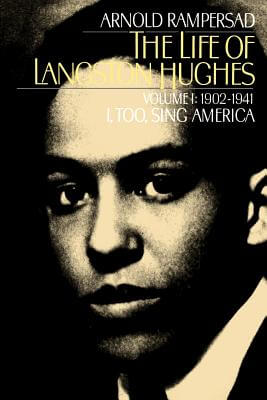 The Life of Langston Hughes: Volume I: 1902-1941, I, Too, Sing America (Life of Langston Hughes, 1902-1941)
The Life of Langston Hughes: Volume I: 1902-1941, I, Too, Sing America (Life of Langston Hughes, 1902-1941)
by Arnold RampersadOxford University Press (Jan 10, 2002)
Read Detailed Book Description
February 1, 2002 marks the 100th birthday of Langston Hughes. To commemorate the centennial of his birth, Arnold Rampersad has contributed new Afterwords to both volumes of his highly-praised biography of this most extraordinary and prolific American writer.
In young adulthood Hughes possessed a nomadic but dedicated spirit that led him from Mexico to Africa and the Soviet Union to Japan, and countless other stops around the globe. Associating with political activists, patrons, and fellow artists, and drawing inspiration from both Walt Whitman and the vibrant Afro-American culture, Hughes soon became the most original and revered of black poets. In the first volume’s Afterword, Rampersad looks back at the significant early works Hughes produced, the genres he explored, and offers a new perspective on Hughes’s lasting literary influence.
Exhaustively researched in archival collections throughout the country, especially in the Langston Hughes papers at Yale University’s Beinecke Library, and featuring fifty illustrations per volume, this anniversary edition will offer a new generation of readers entrance to the life and mind of one of the twentieth century’s greatest artists.
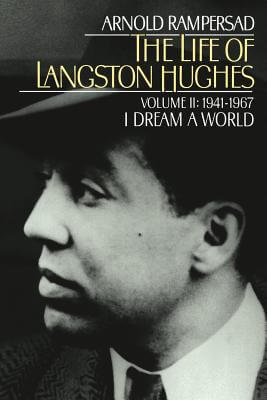 The Life of Langston Hughes: Volume II: 1941-1967, I Dream a World (Life of Langston Hughes, 1941-1967)
The Life of Langston Hughes: Volume II: 1941-1967, I Dream a World (Life of Langston Hughes, 1941-1967)
by Arnold RampersadOxford University Press (Jan 10, 2002)
Read Detailed Book Description
February 1, 2002 marks the 100th birthday of Langston Hughes. To commemorate the centennial of his birth, Arnold Rampersad has contributed new Afterwords to both volumes of his highly-praised biography of this most extraordinary and prolific American writer.
The second volume in this masterful biography finds Hughes rooting himself in Harlem, receiving stimulation from his rich cultural surroundings. Here he rethought his view of art and radicalism, and cultivated relationships with younger, more militant writers such as Richard Wright, Ralph Ellison, James Baldwin, and Amiri Bakara. Rampersad’s Afterword to volume two looks further into his influence and how it expanded beyond the literary as a result of his love of jazz and blues, his opera and musical theater collaborations, and his participation in radio and television. In addition, Rempersad explores the controversial matter of Hughes’s sexuality and the possibility that, despite a lack of clear evidence, Hughes was homosexual.
Exhaustively researched in archival collections throughout the country, especially in the Langston Hughes papers at Yale University’s Beinecke Library, and featuring fifty illustrations per volume, this anniversary edition will offer a new generation of readers entrance to the life and mind of one of the twentieth century’s greatest artists.
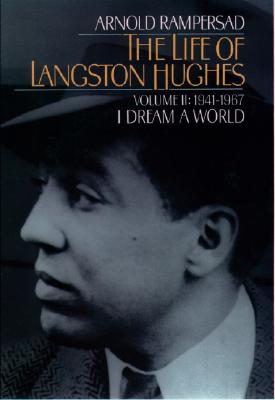 The Life of Langston Hughes: Volume II: 1914-1967, I Dream a World
The Life of Langston Hughes: Volume II: 1914-1967, I Dream a World
by Arnold RampersadOxford University Press (Jan 10, 2002)
Read Detailed Book Description
February 1, 2002 marks the 100th birthday of Langston Hughes. To commemorate the centennial of his birth, Arnold Rampersad has contributed new Afterwords to both volumes of his highly-praised biography of this most extraordinary and prolific American writer.
The second volume in this masterful biography finds Hughes rooting himself in Harlem, receiving stimulation from his rich cultural surroundings. Here he rethought his view of art and radicalism, and cultivated relationships with younger, more militant writers such as Richard Wright, Ralph Ellison, James Baldwin, and Amiri Bakara. Rampersad’s Afterword to volume two looks further into his influence and how it expanded beyond the literary as a result of his love of jazz and blues, his opera and musical theater collaborations, and his participation in radio and television. In addition, Rempersad explores the controversial matter of Hughes’s sexuality and the possibility that, despite a lack of clear evidence, Hughes was homosexual.
Exhaustively researched in archival collections throughout the country, especially in the Langston Hughes papers at Yale University’s Beinecke Library, and featuring fifty illustrations per volume, this anniversary edition will offer a new generation of readers entrance to the life and mind of one of the twentieth century’s greatest artists.
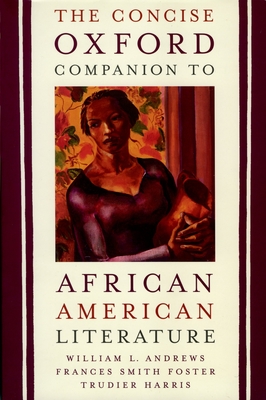 The Concise Oxford Companion to African American Literature
The Concise Oxford Companion to African American Literature
by William L. Andrews, Frances Smith Foster, and Trudier HarrisOxford University Press (Feb 15, 2001)
Read Detailed Book Description
This abridgement of The Oxford Companion to African American Literature will make the entries of the greatest general interest available to a wider audience, providing the same caliber of scholarship and information as the original volume.
The Concise collects more than 400 biographies (authors, critics, literary characters and historical figures) of both well-known figures and the lives and careers of writers not found in other reference works. The abridgement also includes the 150 plot summaries of major works. The editors briefly update the biographic details for author entries to include mention of major new works, death dates, and awards since the Companion’s 1997 publication. A revised introduction, contributors list, subject index, cross-references, and updated bibliographical notes are also included. The volume reprints in its entirety the five-part fifteen page essay, Literary History, capturing the full sweep of African American writing in the U.S. from the colonial and early national eras to the present day.
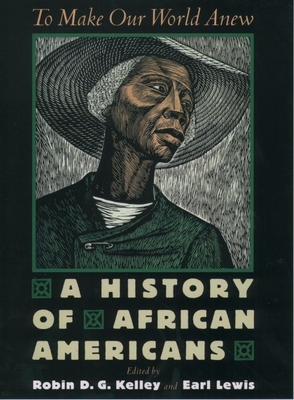 To Make Our World Anew: A History of African Americans
To Make Our World Anew: A History of African Americans
by Robin D. G. KelleyOxford University Press (Jul 06, 2000)
Read Detailed Book Description
Written by the most prominent of the new generation of historians, this superb volume offers the most up-to-date and authoritative account available of African-American history, ranging from the first Africans brought as slaves into the Americas, to today’s black filmmakers and politicians.
Here is a panoramic view of African American life, rich in gripping first-person accounts and short character sketches that invite readers to relive history as African Americans experienced it. We begin in Africa, with the growth of the slave trade, and follow the forced migration of what is estimated to be between ten and twenty million people, witnessing the terrible human cost of slavery in the colonies of England and Spain. We read of the Haitian Revolution, which ended victoriously in 1804 with the birth of the first independent black nation in the New World, and of slave rebellions and resistance in the United States in the years leading up to the Civil War. There are vivid accounts of the Civil War and Reconstruction years, the backlash of notorious Jim Crow laws and mob lynchings, and the founding of key black educational institutions. The contributors also trace the migration of blacks to the major cities, the birth of the Harlem Renaissance, the hardships of the Great Depression and the service of African Americans in World War II, the struggle for Civil Rights in the 1950s and ’60s, and the emergence of today’s black middle class.
From Harriet Tubman and Frederick Douglass to Martin Luther King, Jr., and Louis Farrakhan, To Make Our World Anew is an unforgettable portrait of a people.
 The Burden Of Memory, The Muse Of Forgiveness (The W.E.B. Du Bois Institute Series)
The Burden Of Memory, The Muse Of Forgiveness (The W.E.B. Du Bois Institute Series)
by Wole SoyinkaOxford University Press (Feb 17, 2000)
Read Detailed Book Description
Nobel Laureate in Literature Wole Soyinka considers all of Africa—indeed, all the world—as he poses this question: once repression stops, is reconciliation between oppressor and victim possible? In the face of centuries-long devastation wrought on the African continent and her Diaspora by slavery, colonialism, Apartheid, and the manifold faces of racism, what form of recompense could possibly suffice? In a voice as eloquent and humane as it is forceful, Soyinka boldly challenges in these pages the notions of simple forgiveness, confession, and absolution as strategies for social healing. Ultimately, he turns to art—poetry, music, painting, etc.—as the one source that can nourish the seed of reconciliation: art is the generous vessel that can hold together the burden of memory and the hope of forgiveness.
Based on Soyinka’s Stewart-McMillan lectures delivered at the DuBois Institute at Harvard, The Burden of Memory speaks not only to those concerned specifically with African politics, but also to anyone seeking the path to social justice through some of history’s most inhospitable terrain.
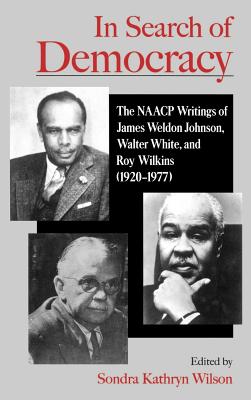 In Search of Democracy: The NAACP Writings of James Weldon Johnson, Walter White, and Roy Wilkins (1920-1977)
In Search of Democracy: The NAACP Writings of James Weldon Johnson, Walter White, and Roy Wilkins (1920-1977)
by Sondra Kathryn WilsonOxford University Press (Aug 05, 1999)
Read Detailed Book Description
This collection of writings offers a glimpse into the minds of three N.A.A.C.P. leaders who occupied the center of black thought and action during some of the most troublesome and pivotal times of the civil rights movement. The volume delineates fifty-seven years of the N.A.A.C.P.’s program under the successive direction of James Weldon Johnson, Walter White, and Roy Wilkins. These writings illustrate the vital roles of these three leaders in building a peoples liberation, underscoring not only their progressive influence throughout their time in power, but also a vision of the future as race relations enter the 21st Century. Much of the material, notably "The Secretary’s Reports to the Board," is published here for the first time, offering an invaluable resource for those seeking a deeper knowledge of the history of race in America
 Conjugal Union: The Body, the House, and the Black American
Conjugal Union: The Body, the House, and the Black American
by Robert F. Reid-PharrOxford University Press (Jul 22, 1999)
Read Detailed Book Description
This book argues that during the antebellum period, a community of free Black northeastern intellectuals sought to establish the stability of a Black American subjectivity by figuring the Black body as the necessary antecedent to any intelligible Black American public presence. Reid-Pharr goes on to argue that the fact of the Black body’s constant and often spectacular display demonstrates an incredible uncertainty as to that body’s status. Thus, antebellum Black intellectuals were always anxious about how a stable relationship between the Black community might be maintained.
Paying particular attention to Black American novels written before the Civil War, the author shows how the household was utilized by these writers to normalize this relationship of body to community, such that a person could enter a household as a white and leave it as a Black.
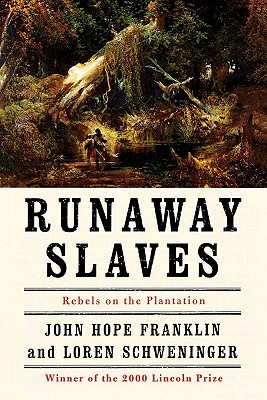 Runaway Slaves: Rebels on the Plantation
Runaway Slaves: Rebels on the Plantation
by John Hope FranklinOxford University Press (Apr 29, 1999)
Read Detailed Book Description
From John Hope Franklin, America’s foremost African American historian, comes this groundbreaking analysis of slave resistance and escape. A sweeping panorama of plantation life before the Civil War, this book reveals that slaves frequently rebelled against their masters and ran away from their plantations whenever they could.
For generations, important aspects about slave life on the plantations of the American South have remained shrouded. Historians thought, for instance, that slaves were generally pliant and resigned to their roles as human chattel, and that racial violence on the plantation was an aberration. In this precedent setting book, John Hope Franklin and Loren Schweninger demonstrate that, contrary to popular belief, significant numbers of slaves did in fact frequently rebel against their masters and struggled to attain their freedom. By surveying a wealth of documents, such as planters’ records, petitions to county courts and state legislatures, and local newspapers, this book shows how slaves resisted, when, where, and how they escaped, where they fled to, how long they remained in hiding, and how they survived away from the plantation. Of equal importance, it examines the reactions of the white slaveholding class, revealing how they marshaled considerable effort to prevent runaways, meted out severe punishments, and established patrols to hunt down escaped slaves.
Reflecting a lifetime of thought by our leading authority in African American history, this book provides the key to truly understanding the relationship between slaveholders and the runaways who challenged the system—illuminating as never before the true nature of the South’s "most peculiar institution."
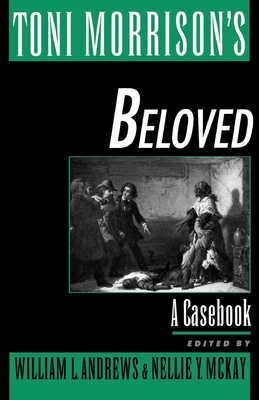 Toni Morrison’s Beloved: A Casebook
Toni Morrison’s Beloved: A Casebook
by Nellie Y. McKayOxford University Press, USA (Jan 21, 1999)
Read Detailed Book Description
With the continued expansion of the literary canon, multicultural works of modern literary fiction and autobiography have assumed an increasing importance for students and scholars of American literature. This exciting new series assembles key documents and criticism concerning these works
that have so recently become central components of the American literature curriculum. Each casebook will reprint documents relating to the work’s historical context and reception, present the best in critical essays, and when possible, feature an interview of the author. The series will provide,
for the first time, an accessible forum in which readers can come to a fuller understanding of these contemporary masterpieces and the unique aspects of American ethnic, racial, or cultural experience that they so ably portray.
This casebook to Morrison’s classic novel presents seven essays that represent the best in contemporary criticism of the book. In addition, the book includes a poem and an abolitionist’s tract published after a slave named Margaret Garner killed her child to save her from slavery—the very incident
Morrison fictionalizes in Beloved.
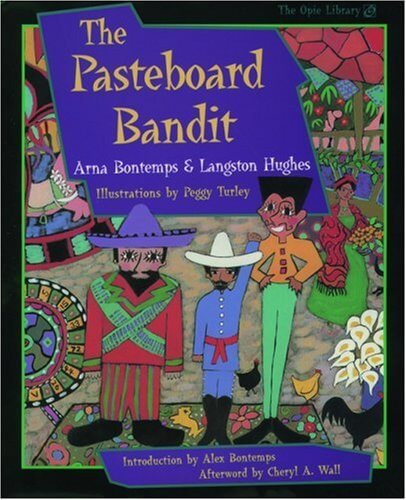 The Pasteboard Bandit (The Iona and Peter Opie Library of Children’s Literature)
The Pasteboard Bandit (The Iona and Peter Opie Library of Children’s Literature)
by Langston HughesOxford University Press (Nov 20, 1997)
Read Detailed Book Description
In this delightful children’s tale, an American boy, Kenny Strange, moves to the quiet Mexican town of Taxco with his parents and strikes up a friendship with young Juanito Pérez, a Taxco native. The two boys are brought together by an enchanting toy, the pasteboard bandit Tito. Chosen by Juanito at a town fair from among the other pasteboard toys, Tito, with his colorful clothes and bright eyes, becomes Juanito’s and Kenny’s constant companion, and the threesome share many adventures in and around the town’s rolling green hills. The boys’ growing friendship, Kenny’s introduction to a culture unlike his own, and Tito’s witty reflections on being a toy will be recognized instantly by anyone young or old who has ever made a friend or imagined that a toy might be real.
Originally written in 1935, but never before published, The Pasteboard Bandit grew out of several trips Langston Hughes made to Mexico during his lifetime. Hughes first went to the town of Toluca at age 5 to visit his father, and again when he was older. During these visits, Hughes met many writers and artists, and it is their influence that informs the story of The Pasteboard Bandit—a story of two cultures meeting. When Hughes left Mexico for the last time, at age 32, he was carrying the first draft for The Pasteboard Bandit.
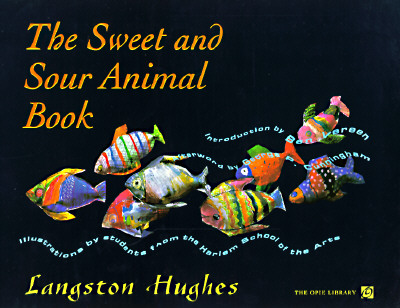 The Sweet and Sour Animal Book
The Sweet and Sour Animal Book
by Langston HughesOxford University Press (Nov 20, 1997)
Read Detailed Book Description
Langston Hughes (1902-1967) was one of the most versatile writers of the artistic movement known as the Harlem Renaissance. Though known primarily as a poet, he also wrote plays essays, novels, short stories, and books and poems for children.
Ben Vereen has left his mark on the Broadway stage, concert circuit, and in film and television. He has also been widely honored for his humanitarian activities and work with young people.
George P. Cunningham is Associate Professor of Africana Studies at Brooklyn College.
The Harlem School of the Arts provides instruction in music, dance, drama, and visual arts to more than 1,500 students every year. Many of the first, second, and third grade students who participated in this project are part ofOpportunities for Learning in the Arts, a program that offers arts instruction for public school students during the school day.
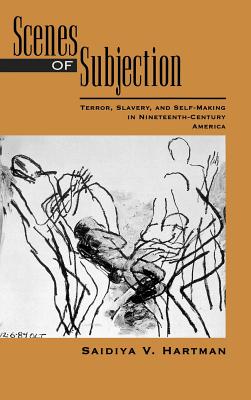 Scenes of Subjection: Terror, Slavery, and Self-Making in Nineteenth-Century America
Scenes of Subjection: Terror, Slavery, and Self-Making in Nineteenth-Century America
by Saidiya HartmanOxford University Press (Sep 04, 1997)
Read Detailed Book Description
In this provocative and original exploration of racial subjugation during slavery and its aftermath, Saidiya Hartman illumines the forms of terror and resistance that shaped black identity. Scenes of Subjection examines the forms of domination that usually go undetected; in particular, the encroachments of power that take place through notions of humanity, enjoyment, protection, rights, and consent. By looking at slave narratives, plantation diaries, popular theater, slave performance, freedmen’s primers, and legal cases, Hartman investigates a wide variety of "scenes" ranging from the auction block and minstrel show to the staging of the self-possessed and rights-bearing individual of freedom. While attentive to the performance of power—the terrible spectacles of slaveholders’ dominion and the innocent amusements designed to abase and pacify the enslaved—and the entanglements of pleasure and terror in these displays of mastery, Hartman also examines the possibilities for resistance, redress and transformation embodied in black performance and everyday practice. This important study contends that despite the legal abolition of slavery, emergent notions of individual will and responsibility revealed the tragic continuities between slavery and freedom. Bold and persuasively argued, Scenes of Subjection will engage readers in a broad range of historical, literary, and cultural studies.
 The Oxford Companion to African American Literature
The Oxford Companion to African American Literature
by William L. Andrews, Frances Smith Foster, and
Trudier HarrisOxford University Press (Mar 27, 1997)
Read Detailed Book Description
Here indeed is the pantheon of African American writers — Phillis Wheatley and Sojourner Truth, Frederick Douglass and W. E. B. Du Bois, Gwendolyn Brooks and Zora Neale Hurston, Langston Hughes and Countee Cullen, James Baldwin and Ralph Ellison, Toni Morrison and Alice Walker, John Edgar Wideman and August Wilson, Jamaica Kincaid and Gloria Naylor, Stanley Crouch and Cornel West, and hundreds more.
Moreover, the Companion includes entries on 150 major works of African American literature (including synopses of novels), from Harriet Jacobs’s Incidents in the Life of a Slave Girl, Richard Wright’s Native Son, to Lorraine Hansberry’s A Raisin in the Sun; on literary characters, ranging from Bigger Thomas, to Coffin Ed Johnson, Kunta Kinte, Sula Peace; on character types, such as Aunt Jemima, Brer Rabbit, John Henry, Stackolee, and the trickster; and on such icons of black culture as Muhammad Ali, John Coltrane, Marcus Garvey, Jackie Robinson, John Brown, and Harriet Tubman.
Here, too, are general articles on the traditional literary genres, such as poetry, fiction, and drama; on genres of special import in African American letters, such as autobiography, slave narratives, Sunday School literature, and oratory; and on a wide spectrum of related topics, including The Black Arts Movement, journalism, the black periodical press, major libraries and research centers, religion, literary societies, women’s clubs, and various publishing enterprises.
 Between God and Gangsta Rap: Bearing Witness to Black Culture
Between God and Gangsta Rap: Bearing Witness to Black Culture
by Michael Eric DysonOxford University Press (Jan 30, 1997)
Read Detailed Book Description
A former welfare father from the ghetto of Detroit, Michael Eric Dyson is today a critic, scholar, and ordained Baptist minister who has forged a unique role: he is a compelling spokesman for the concerns of the black community, and also a leader who has a genuine rapport with that community, particularly with urban youth. In his essays, lectures, sermons, and books, he has emerged as one of the leading African-American voices of our day. Dyson’s passion for contemporary black culture informs Between God and Gangsta’ Rap, his latest foray into the ongoing debate about African-American identity which embraces the hopes of the church and the cool reality of hip-hop. Bringing together writings on music, religion, politics, and identity, and offering a multi-faceted view of black life, the book charts the progress of Dyson’s own soul, from his roots in the Detroit ghetto, to his current status as a Baptist minister, professor, cultural critic, husband, and father. Dyson opens with a letter to his brother, who is serving life in prison on a murder charge. This painful piece reveals a violence in the author’s own family that sets the tone for themes that will emerge throughout these writings: violence on the black body and soul; the redemptive power of hope through school, church, and family; sexuality as a source of anguish and of joy; and the struggle with entrenched white racism. There is a section of wonderful profiles Dyson calls "Testimonials"—studies of black men, from O.J. Simpson to Marion Barry, and from Baptist preacher Gardner Taylor to Michael Jordan and Sam Cooke. In "Obsessed with O.J.," Dyson offers an extremely personal and insightful series of reflections on the case. In "Lessons," Dyson takes up the subjects of politics and racial identity. Newt Gingrich and moral panic, Quabiliah Shabazz, Carol Moseley Braun, the NAACP, Martin Luther King, Jr., and Malcolm X all figure in these insightful and accessible pieces. And "Songs of Celebration" draws from Dyson’s writings for the popular press such as Rolling Stone and Vibe, and explores the joys and pitfalls of black expression, from the black vernacular bible to gospel music, R & B, and hip-hop. Dyson concludes with an essay framed as a letter to his wife, which offers a positive counterbalance to the opening address to his brother. The letter serves as a tribute to the redemptive powers of love, the black family, spirit, and change. Arguing that the richness of black culture today can be found in the interstices—between god and gangsta’ rap—Dyson charts the progress and pain of African Americans over the past decade, showing that brilliance and beauty, pain and drudgery are components of this changing culture. As a compendium of his thinking about contemporary culture Between God and Gangsta’ Rap will find a wide audience among black and white readers.
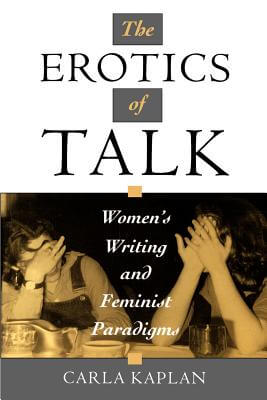 The Erotics Of Talk: Women’s Writing And Feminist Paradigms
The Erotics Of Talk: Women’s Writing And Feminist Paradigms
by Carla KaplanOxford University Press (Dec 12, 1996)
Read Detailed Book Description
Is feminism in "crisis?" With many feminists now questioning identification and focusing on differences between women, what is the fate of feminist criticism’s traditional imperative to rescue women’s stories and make their voices heard?
In this provocative rereading of the classic texts of the feminist literary canon, Carla Kaplan takes a hard look at the legacy of feminist criticism and argues that important features of feminism’s own canon have been overlooked in the rush to rescue and identify texts. African-American women’s texts, she demonstrates, often dramatize their distrust of their readers, their lack of faith in "the cultural conversation," through strategies of self-silencing and "self-talk." At the same time, she argues, the homoerotics of women’s writing has too often gone unremarked. Not only does longing for an ideal listener draw women’s texts into a romance with the reader, but there is an erotic excess which is part of feminist critical recuperation itself.
Drawing on a wide range of resources, from sociolinguistics and anthropology to literary theory, Kaplan’s highly readable study proposes a new model for understanding and representing "talk." She supplies fresh readings of such feminist classics as Jane Eyre, "The Yellow Wallpaper," Incidents in the Life of a Slave Girl, Their Eyes Were Watching God, and The Color Purple, revealing how their "erotics of talk" works as a rich political allegory and form of social critique.
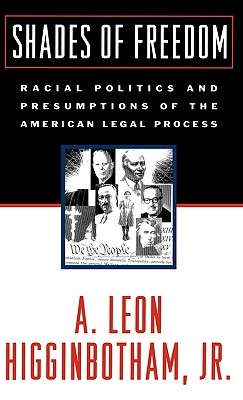 Shades Of Freedom: Racial Politics And Presumptions Of The American Legal Process
Shades Of Freedom: Racial Politics And Presumptions Of The American Legal Process
by A. Leon HigginbothamOxford University Press (Oct 24, 1996)
Read Detailed Book Description
Few individuals have had as great an impact on the law—both its practice and its history—as A. Leon Higginbotham, Jr. A winner of the Presidential Medal of Freedom, the nation’s highest civilian honor, he has distinguished himself over the decades both as a professor at Yale, the University of Pennsylvania, and Harvard, and as a judge on the United States Court of Appeals. But Judge Higginbotham is perhaps best known as an authority on racism in America: not the least important achievement of his long career has been In the Matter of Color, the first volume in a monumental history of race and the American legal process. Published in 1978, this brilliant book has been hailed as the definitive account of racism, slavery, and the law in colonial America.
Now, after twenty years, comes the long-awaited sequel. In Shades of Freedom, Higginbotham provides a magisterial account of the interaction between the law and racial oppression in America from colonial times to the present, demonstrating how the one agent that should have guaranteed equal treatment before the law—the judicial system—instead played a dominant role in enforcing the inferior position of blacks. The issue of racial inferiority is central to this volume, as Higginbotham documents how early white perceptions of black inferiority slowly became codified into law. Perhaps the most powerful and insightful writing centers on a pair of famous Supreme Court cases, which Higginbotham uses to portray race relations at two vital moments in our history. The Dred Scott decision of 1857 declared that a slave who had escaped to free territory must be returned to his slave owner. Chief Justice Roger Taney, in his notorious opinion for the majority, stated that blacks were "so inferior that they had no right which the white man was bound to respect." For Higginbotham, Taney’s decision reflects the extreme state that race relations had reached just before the Civil War. And after the War and Reconstruction, Higginbotham reveals, the Courts showed a pervasive reluctance (if not hostility) toward the goal of full and equal justice for African Americans, and this was particularly true of the Supreme Court. And in the Plessy v. Ferguson decision, which Higginbotham terms "one of the most catastrophic racial decisions ever rendered," the Court held that full equality—in schooling or housing, for instance—was unnecessary as long as there were "separate but equal" facilities. Higginbotham also documents the eloquent voices that opposed the openly racist workings of the judicial system, from Reconstruction Congressman John R. Lynch to Supreme Court Justice John Marshall Harlan to W. E. B. Du Bois, and he shows that, ironically, it was the conservative Supreme Court of the 1930s that began the attack on school segregation, and overturned the convictions of African Americans in the famous Scottsboro case. But today racial bias still dominates the nation, Higginbotham concludes, as he shows how in six recent court cases the public perception of black inferiority continues to persist.
In Shades of Freedom, a noted scholar and celebrated jurist offers a work of magnificent scope, insight, and passion. Ranging from the earliest colonial times to the present, it is a superb work of history—and a mirror to the American soul.
 “Who Set You Flowin’?”: The African-American Migration Narrative (Race And American Culture)
“Who Set You Flowin’?”: The African-American Migration Narrative (Race And American Culture)
by Farah Jasmine GriffinOxford University Press (Sep 26, 1996)
Read Detailed Book Description
Twentieth-century America has witnessed the most widespread and sustained movement of African-Americans from the South to urban centers in the North. Who Set You Flowin’? examines the impact of this dislocation and urbanization, identifying the resulting Migration Narratives as a major genre in African-American cultural production. Griffin takes an interdisciplinary approach with readings of several literary texts, migrant correspondence, painting, photography, rap music, blues, and rhythm and blues. From these various sources Griffin isolates the tropes of Ancestor, Stranger, and Safe Space, which, though common to all Migration Narratives, vary in their portrayal. She argues that the emergence of a dominant portrayal of these tropes is the product of the historical and political moment, often challenged by alternative portrayals in other texts or artistic forms, as well as intra-textually. Richard Wright’s bleak, yet cosmopolitan portraits were countered by Dorothy West’s longing for Black Southern communities. Ralph Ellison, while continuing Wright’s vision, reexamined the significance of Black Southern culture. Griffin concludes with Toni Morrison embracing the South "as a site of African-American history and culture," "a place to be redeemed."
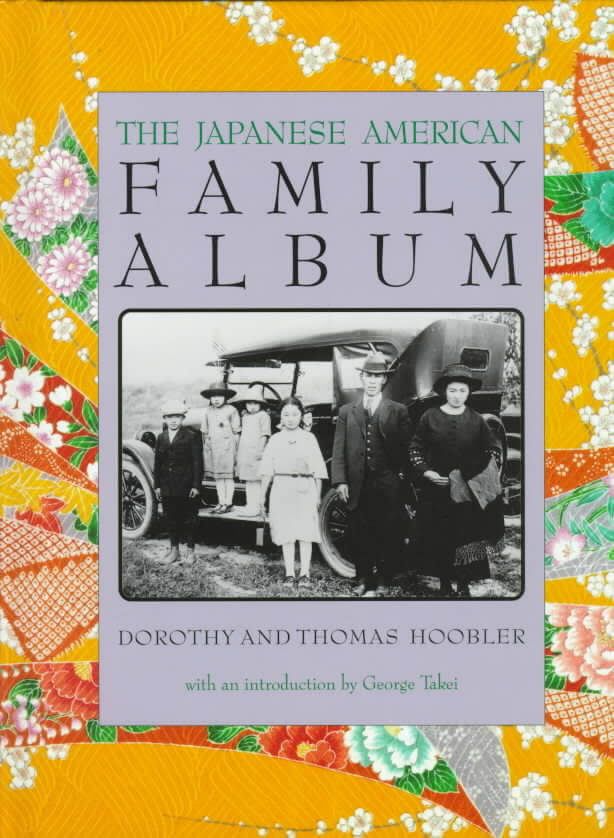 The Japanese American Family Album (American Family Albums)
The Japanese American Family Album (American Family Albums)
by Dorothy Hoobler and Thomas HooblerOxford University Press (Feb 29, 1996)
Read Detailed Book Description
Drawing on the experiences of generations of Japanese immigrants—revealed in diaries, letters, interviews, newspaper and magazine articles, and personal reflections—a book filled with photographs tells what it was like to leave a beloved homeland for a new life. UP.
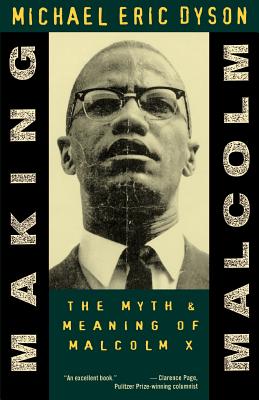 Making Malcolm: The Myth and Meaning of Malcolm X
Making Malcolm: The Myth and Meaning of Malcolm X
by Michael Eric DysonOxford University Press (Jan 25, 1996)
Read Detailed Book Description
Malcolm X’s cultural rebirth—his improbable second coming—brims with irony. The nineties are marked by intense and often angry debates about racial authenticity and "selling out," and the participants in these debates—from politicians to filmmakers to rap artists—often draw on Malcolm’s scorching rebukes to such moves. Meanwhile, Malcolm’s "X" is marketed in countless business endeavors and is stylishly branded on baseball hats and T-shirts sported by every age, race, and gender. But this rampant commercialization is only a small part of Malcolm’s remarkable renaissance. One of the century’s most complex black leaders, he is currently blazing a new path across contemporary popular culture, and has even seared the edges of an academy that once froze him out. Thirty years after his assassination, what is it about his life and words that speaks so powerfully to so many? In Making Malcolm, Michael Eric Dyson probes the myths and meanings of Malcolm X for our time. From Spike Lee’s film biography to Eugene Wolfenstein’s psychobiographical study, from hip-hop culture to gender and racial politics, Dyson cuts a critical swathe through both the idolization and the vicious caricatures that have undermined appreciation of Malcolm’s greatest accomplishments. The book’s first section offers a boldly original and penetrating analysis of the major trends in interpreting Malcolm’s legacy since his death, and the fiercely competing interests and ideologies that have shaped these trends. From mainstream books to writings published by the independent black press, Dyson identifies and examines the different "Malcolms" who have emerged in popular and academic investigations of his life and career: Malcolm as hero and saint; Malcolm as a public moralist; Malcolm as victim and vehicle of psychohistorical forces; and Malcolm as revolutionary figure. With impassioned and compelling force, Dyson argues that Malcolm was too formidable a historic figure—the movements he led too variable and contradictory, the passion and intelligence he summoned too extraordinary and disconcerting—to be viewed through any narrow cultural prism. The second half of the book offers a fascinating exploration of Malcolm’s relationship to a resurgent black nationalism, his influence on contemporary black filmmakers and musicians, and his use in progressive black politics. From sexism and gangsta’ rap to the painful predicament of black males, from the politics of black nationalism to the possibilities of race in the Age of Clinton, Dyson’s trenchant and often inspiring analysis reveals how Malcolm’s legacy continues to spur debate and action today. A rare and important book, Making Malcolm casts new light not only on the life and career of a seminal black leader, but on the aspirations and passions of the growing numbers who have seized on his life for insight and inspiration.
 Ways of Dying (Southern African Writing)
Ways of Dying (Southern African Writing)
by Zakes MdaOxford University Press (Nov 16, 1995)
Read Detailed Book Description
Written in the style of "magic realism," this tragic-comic contemporary novel is set against the backdrops of shabby but vibrant city slums and a rural South African community. The story’s hero, Toloki, is an eccentric yet dignified professional mourner whose different worlds are reconciled, amid an atmosphere charged with bizarre realism, when he finds love and makes peace with his past.
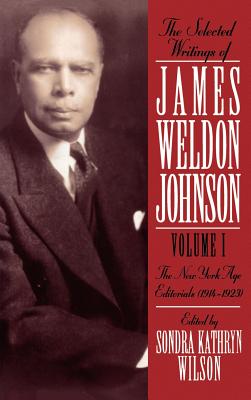 The Selected Writings of James Weldon Johnson: Volume I: New York Age Editorials (1914-1923)
The Selected Writings of James Weldon Johnson: Volume I: New York Age Editorials (1914-1923)
by Sondra Kathryn WilsonOxford University Press (May 18, 1995)
Read Detailed Book Description
James Weldon Johnson (1871-1938) would have been judged a successful man had he merely remained the principal of Stanton School in his hometown of Jacksonville, FL. Destiny led him, however, to become the first African-American to pass the Florida Bar exam, to win international acclaim as a songwriter, poet, novelist, diplomat, playwright, journalist, and champion of human rights. Since that time, though, his life and contributions have gone virtually unnoticed, except for his well-known song, "Lift Every Voice and Sing."
Johnson’s dual role as civil rights leader and literary artist was unprecedented and has not been replicated since. He used this duality in attempt to exonerate black Americans from the psychological and physical persecutions of "Jim Crow." These two volumes comprise of Johnson’s literary work, song lyrics, and both his literary and political essays. A critical introduction places Johnson in relation to other black artists, the development of African-American literature, and early integrationist movements.
By painting a vivid picture of the race problem in this nation, and by his portrayal of the successes and possibilities of his race, he pricked white America’s conscience. This collection serves as witness to Johnson’s pioneering a momentous standard for African-American literature while he laid the groundwork for the early civil rights movement in America.
 Making Malcolm: The Myth and Meaning of Malcolm X
Making Malcolm: The Myth and Meaning of Malcolm X
by Michael Eric DysonOxford University Press (Jan 05, 1995)
Read Detailed Book Description
Malcolm X’s cultural rebirth—his improbable second coming—brims with irony. The nineties are marked by intense and often angry debates about racial authenticity and "selling out," and the participants in these debates—from politicians to filmmakers to rap artists—often draw on Malcolm’s scorching rebukes to such moves. Meanwhile, Malcolm’s "X" is marketed in countless business endeavors and is stylishly branded on baseball hats and T-shirts sported by every age, race, and gender. But this rampant commercialization is only a small part of Malcolm’s remarkable renaissance. One of the century’s most complex black leaders, he is currently blazing a new path across contemporary popular culture, and has even seared the edges of an academy that once froze him out. Thirty years after his assassination, what is it about his life and words that speaks so powerfully to so many? In Making Malcolm, Michael Eric Dyson probes the myths and meanings of Malcolm X for our time. From Spike Lee’s film biography to Eugene Wolfenstein’s psychobiographical study, from hip-hop culture to gender and racial politics, Dyson cuts a critical swathe through both the idolization and the vicious caricatures that have undermined appreciation of Malcolm’s greatest accomplishments. The book’s first section offers a boldly original and penetrating analysis of the major trends in interpreting Malcolm’s legacy since his death, and the fiercely competing interests and ideologies that have shaped these trends. From mainstream books to writings published by the independent black press, Dyson identifies and examines the different "Malcolms" who have emerged in popular and academic investigations of his life and career: Malcolm as hero and saint; Malcolm as a public moralist; Malcolm as victim and vehicle of psychohistorical forces; and Malcolm as revolutionary figure. With impassioned and compelling force, Dyson argues that Malcolm was too formidable a historic figure—the movements he led too variable and contradictory, the passion and intelligence he summoned too extraordinary and disconcerting—to be viewed through any narrow cultural prism. The second half of the book offers a fascinating exploration of Malcolm’s relationship to a resurgent black nationalism, his influence on contemporary black filmmakers and musicians, and his use in progressive black politics. From sexism and gangsta’ rap to the painful predicament of black males, from the politics of black nationalism to the possibilities of race in the Age of Clinton, Dyson’s trenchant and often inspiring analysis reveals how Malcolm’s legacy continues to spur debate and action today. A rare and important book, Making Malcolm casts new light not only on the life and career of a seminal black leader, but on the aspirations and passions of the growing numbers who have seized on his life for insight and inspiration.
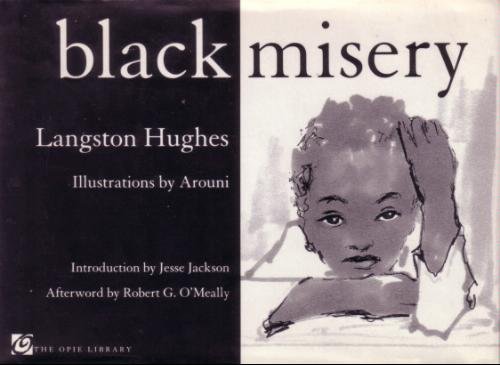 Black Misery
Black Misery
by Langston HughesOxford University Press (Jul 21, 1994)
Read Detailed Book Description
Black Misery was first published in 1969, but the gentle, funny, and sometimes melancholy words of Langston Hughes still cause a blink of recognition. After 25 years, it remains relevant in our own time. As you turn the pages you may say, "I remember feeling like that!" You may say, "I feel like that now."
As you look at Arouni’s black and white illustrations and read the short but powerful one sentence captions, you feel the predicament of a black child adjusting to the new world of integration of the 1960s. You feel the mix of hope and dismay that characterized the decade.
Langston Hughes was a writer who often made his readers ask hard questions about life. In Black Misery he wrote about prejudice and indifference, but he wrote with humor and compassion. Today—just as we did 25 years ago-we smile and even laugh, and we also understand that some things are more than hard, are more than sad. They are pure misery.
Black Misery was the last book that Langston Hughes wrote. He died in May 1967, while working on the manuscript.

Share your Own “Black Misery Is…” quotes, and read those left by AALBC readers.

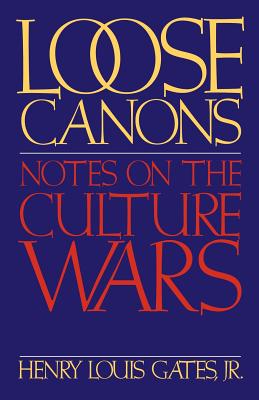 Loose Canons: Notes on the Culture Wars
Loose Canons: Notes on the Culture Wars
by Henry Louis Gates, Jr.Oxford University Press (May 20, 1993)
Read Detailed Book Description
Multiculturalism. It has been the subject of cover stories in Time and Newsweek, as well as numerous articles in newspapers and magazines around America. It has sparked heated jeremiads by George Will, Dinesh D’Sousa, and Roger Kimball. It moved William F. Buckley to rail against Stanley Fish and Catherine Stimpson on “Firing Line.” It is arguably the most hotly debated topic in America today—and justly so. For whether one speaks of tensions between Hasidim and African-Americans in Crown Heights, or violent mass protests against Moscow in ethnic republics such as Armenia, or outright war between Serbs and Bosnians in the former Yugoslavia, it is clear that the clash of cultures is a worldwide problem, deeply felt, passionately expressed, always on the verge of violent explosion. Problems of this magnitude inevitably frame the discussion of “multiculturalism” and “cultural diversity” in the American classroom as well. In Loose Canons, one of America’s leading literary and cultural critics, Henry Louis Gates, Jr., offers a broad, illuminating look at this highly contentious issue. Gates agrees that our world is deeply divided by nationalism, racism, and sexism, and argues that the only way to transcend these divisions—to forge a civic culture that respects both differences and similarities—is through education that respects both the diversity and commonalities of human culture. His is a plea for cultural and intercultural understanding. (You can’t understand the world, he observes, if you exclude 90 percent of the world’s cultural heritage.) We feel his ideas most strongly voiced in the concluding essay in the volume, “Trading on the Margin.” Avoiding the stridency of both the Right and the Left, Gates concludes that the society we have made simply won’t survive without the values of tolerance, and cultural tolerance comes to nothing without cultural understanding. Henry Louis Gates is one of the most visible and outspoken figures on the academic scene, the subject of a cover story in The New York Times Sunday Magazine and a major profile in The Boston Globe, and a much sought-after commentator. And as one of America’s foremost advocates of African-American Studies (he is head of the department at Harvard), he has reflected upon the varied meanings of multiculturalism throughout his professional career, long before it became a national controversy. What we find in these pages, then, is the fruit of years of reflection on culture, racism, and the “American identity,” and a deep commitment to broadening the literary and cultural horizons of all Americans.
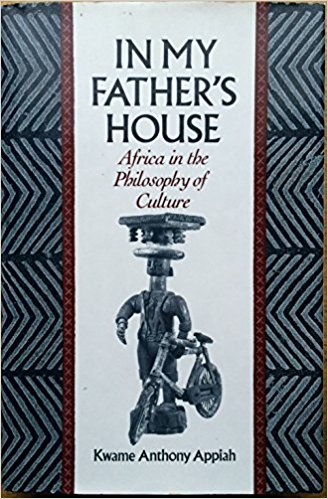 In My Father’s House: Africa in the Philosophy of Culture
In My Father’s House: Africa in the Philosophy of Culture
by Kwame Anthony AppiahOxford University Press (Apr 02, 1992)
Read Detailed Book Description
Africa’s intellectuals have long been engaged in a conversation with each other, and with Europeans and Americans about what it means to be African. At the heart of these debates on African identity are the seminal works of politicians, creative writers and philosophers from Africa and its diaspora. In this book, Appiah draws on his experiences as a Ghanaian in the New World to explore the writings of these African and African-American thinkers and to contribute his own vision of the possibilities and pitfalls of an African identity in the late twentieth century. Appiah sets out to dismantle the specious oppositions between "us" and "them," the West and the Rest, that have governed so much of the cultural debate about Africa in the modern world. All of us, he maintains, wherever we live on the planet, must explore together the relations between our local cultures and an increasingly global civilization. Combining philosophical analysis with more personal reflections, Appiah addresses the major issues in the philosophy of culture through an exploration of the contemporary African predicament.
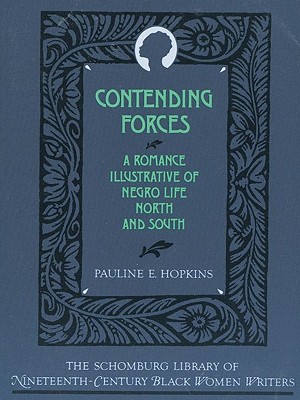 Contending Forces: A Romance Illustrative of Negro Life North and South
Contending Forces: A Romance Illustrative of Negro Life North and South
by Pauline HopkinsOxford University Press (May 01, 1991)
Read Detailed Book Description
"A gift to the profession (and to our students) to have the Schomburg Library of Nineteenth Century Black Women’s Writers in affordable paperback."—Janet Gabler-Hover, Georgia State Univ.
"Brilliant…her masterwork."—Eric J. Sundquist in The New York Times Book Review
"Terrific romance!"—Leonard Cassuto, Fordham University, Lincoln Center
"Fits into my course wonderfully."—Noelle Arrangoiz, University of Denver
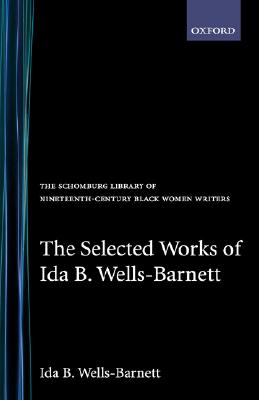 The Selected Works of Ida B. Wells-Barnett
The Selected Works of Ida B. Wells-Barnett
by Ida B. WellsOxford University Press (Apr 18, 1991)
Read Detailed Book Description
Four of Ida B. Wells-Barnett’s moving anti-lynching essays are presented in this volume. Written during the height of the lynching craze at the turn of the century, they elegantly speak to the pain and loss caused by racist thought and action.
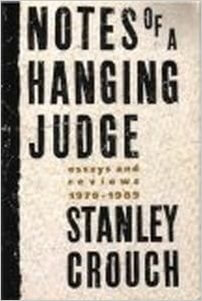 Notes Of A Hanging Judge: Essays And Reviews, 1979-1989
Notes Of A Hanging Judge: Essays And Reviews, 1979-1989
by Stanley CrouchOxford University Press (Mar 28, 1991)
Read Detailed Book Description
Stanley Crouch identifies the civil rights movement of the last four decades as the defining feature of contemporary American society. In Notes of a Hanging Judge, he explores it from all sides—from its epochal triumphs and the forces that have nearly destroyed it, through its great artistic and political success stories, to the crime culture it has been powerless to prevent or control—and traces its complex and ambivalent interactions with the feminist and gay dissent that followed its example.
Balancing the passionate involvement of an insider with a reporter’s open-minded rigor, and using his virtuosic prose style, Crouch offers uniquely insightful accounts of familiar public issues—black middle-class life, the Bernhard Goetz case, black homosexuals, the career of Louis Farrakhan—that throw fresh light on the position of Afro-Americans in the contemporary world. Even more revealing are Crouch’s accounts of his travels, focusing on his perceptions as a black man, that put places as diverse as Atlanta and Africa, or Mississippi and Italy, in unique new perspectives. Perhaps most powerful of all are Crouch’s profiles of black leaders ranging from Maynard, to Michael, to Jesse Jackson. Crouch’s stern evaluations have been controversial, especially his vision of the Civil Rights Movement as a noble cause "gone loco," mired in self-defeating ethnic nationalism and condescending self-regard, and conspicuously lacking in the spiritual majesty that ensured its great political victories. His discussions of artistic figures, including extended critiques of Toni Morrison and Spike Lee, have also incited much debate.
Taken together, these essays represent a major reinterpretation of black, and therefore American, culture in our time.
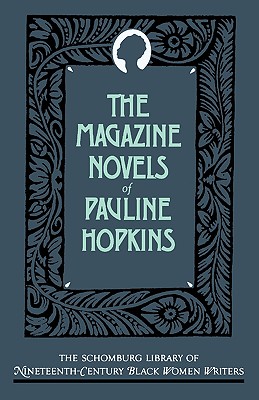 The Magazine Novels of Pauline Hopkins: (including Hagar’s Daughter, Winona, and of One Blood)
The Magazine Novels of Pauline Hopkins: (including Hagar’s Daughter, Winona, and of One Blood)
by Pauline HopkinsOxford University Press (Jul 12, 1990)
Read Detailed Book Description
"Brilliant….It is not hard to imagine that, once her fiction is given the attention it deserves, Hopkins could replace Chestnutt as the foremost black novelist of the period."—Eric J. Sundquist in The New York Times Book Review
"The three novels published in the Schomburg Library for the first time since their appearance in The Colored American Magazine from 1901 to 1903 not only represent an early example of black people producing popular fiction for and about themselves, but extend the cultural and political discourse introduced in Harper’s novel [Iola Leroy]."—The Women’s Review of Books
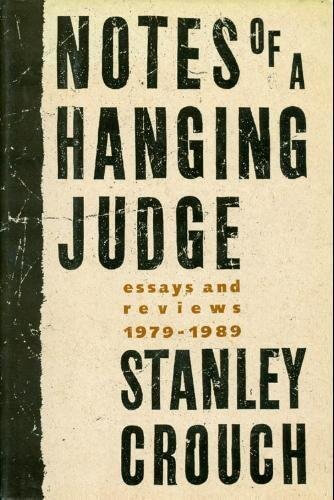 Notes of a Hanging Judge: Essays and Reviews, 1979-1989
Notes of a Hanging Judge: Essays and Reviews, 1979-1989
by Stanley CrouchOxford University Press (Mar 15, 1990)
Read Detailed Book Description
Stanley Crouch, the rarely acknowledged but epic nature of the Afro-American experience offers one of the most revealing paths through the spiritual and intellectual thickets of our time, exposing us to ourselves as often through art as through politics. In Notes of a Hanging Judge, Crouch portrays this century as an "Age of Redefinition" for the United States and identifies the Civil Rights Movement as one of its richest metaphors. Crouch explores the movement from all sides—its epochal triumphs and the forces that have nearly destroyed it, its great political and artistic success stories and the crime culture it has been powerless to prevent or to control—and traces its complex and ambivalent interactions with the feminist and gay dissent that followed its example.
Balancing the passionate involvement of an insider with a reporter’s open-minded rigor, and using a virtuosic prose style, Crouch offers uniquely insightful accounts of familiar public issues—black middle-class life, the Bernhard Goetz case, black homosexuals, the career of Louis Farrakhan—that throw fresh light on the position of Afro-Americans in the contemporary world. Even more revealing are Crouch’s accounts of his travels, focusing on his perceptions as a black man, that put places as diverse as Atlanta and Africa, or Mississippi and Italy, in unique new perspectives. Perhaps most powerful of all are Crouch’s profiles of black leaders ranging from Maynard, to Michael, to Jesse Jackson. Crouch’s stern evaluations are sure to be controversial, especially his vision of the Civil Rights Movement as a noble cause "gone loco," mired in self-defeating ethnic nationalism and condescending self-regard, and conspicuously lacking in the spiritual majesty that ensured its great political victories. His discussions of artistic figures, including extended critiques of Toni Morrison and Spike Lee, will also incite much debate.
Taken together, these essays represent a major reinterpretation of black, and therefore American, culture in our time, and should be read by anyone who is serious about either.
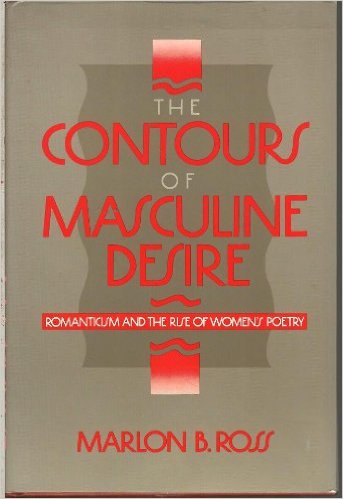 The Contours of Masculine Desire: Romanticism and the Rise of Women’s Poetry
The Contours of Masculine Desire: Romanticism and the Rise of Women’s Poetry
by Marlon B. RossOxford University Press (Jan 11, 1990)
Read Detailed Book Description
This is the first extended study of the role gender plays in the writing, reading, publishing, and reviewing of poetry in late 18th-century and early 19th-century Britain. Ross examines the ways in which Romanticism has been constructed, from the Romantic period to the present, as a masculine enterprise. He then traces the growth of a "feminine" poetic tradition from 1730 to 1830, showing the importance of this previously neglected tradition in the understanding of 19th-century British culture, and the development of current literary history, theory, and taste.
 The Signifying Monkey: A Theory of African-American Literary Criticism
The Signifying Monkey: A Theory of African-American Literary Criticism
by Henry Louis Gates, Jr.Oxford University Press (Dec 14, 1989)
Read Detailed Book Description
Henry Louis Gates, Jr.’s original, groundbreaking study explores the relationship between the African and African-American vernacular traditions and black literature, elaborating a new critical approach located within this tradition that allows the black voice to speak for itself. Examining the ancient poetry and myths found in African, Latin American, and Caribbean culture, and particularly the Yoruba trickster figure of Esu-Elegbara and the Signifying Monkey whose myths help articulate the black tradition’s theory of its literature, Gates uncovers a unique system for interpretation and a powerful vernacular tradition that black slaves brought with them to the New World. His critical approach relies heavily on the Signifying Monkey—perhaps the most popular figure in African-American folklore—and signification and Signifyin(g). Exploring signification in black American life and literature by analyzing the transmission and revision of various signifying figures, Gates provides an extended analysis of what he calls the “Talking Book,” a central trope in early slave narratives that virtually defines the tradition of black American letters. Gates uses this critical framework to examine several major works of African-American literature—including Zora Neale Hurston’s Their Eyes Were Watching God, Ralph Ellison’s Invisible Man, and Ishmael Reed’s Mumbo Jumbo—revealing how these works signify on the black tradition and on each other. The second volume in an enterprising trilogy on African-American literature, The Signifying Monkey—which expands the arguments of Figures in Black—makes an important contribution to literary theory, African-American literature, folklore, and literary history.
 The Collected Works of Phillis Wheatley (The Schomburg Library of Nineteenth-Century Black Women Writers)
The Collected Works of Phillis Wheatley (The Schomburg Library of Nineteenth-Century Black Women Writers)
by Phillis WheatleyOxford University Press (Dec 14, 1989)
Read Detailed Book Description
The past two decades have seen a dramatic resurgence of interest in black women writers, as authors such as Alice Walker and Toni Morrison have come to dominate the larger Afro-American literary landscape. Yet the works of the writers who founded and nurtured the black women’s literary tradition—nineteenth-century Afro-American women—have remained buried in research libraries or in expensive hard-to-find reprints, often inaccessible to twentieth-century readers.
Oxford University Press, in collaboration with the Schomburg Center for Research in Black Culture, a research unit of The New York Public Library, rescued the voice of an entire segment of the black tradition by offering thirty volumes of these compelling and rare works of fiction, poetry, autobiography, biography, essays, and journalism. Responding to the wide recognition this series has received, Oxford now presents four of these volumes in paperback. Each book contains an introduction written by an expert in the field, as well as an overview by Henry Louis Gates, Jr., the General Editor.
Individually, each of these four works now in paperback—including The Journals of Charlotte Forten Grimké, Elizabeth Keckley’s Behind the Scenes: Or, Thirty Years a Slave, and Four Years in the White House, Six Women’s Slave Narratives, and The Collected Works of Phillis Wheatley—stands as a unique literary contribution in its own right. Collectively providing a rich sampling of the range of works written by black women over the course of more than a century, they pay tribute (now long overdue) to an extraordinary and influential group of Afro-American women. These new editions will enable teachers, students, and general readers of American literature, history, Afro-American culture, and women’s studies to hear at last, and learn from, the lost voice of the nineteenth-century black woman writer.
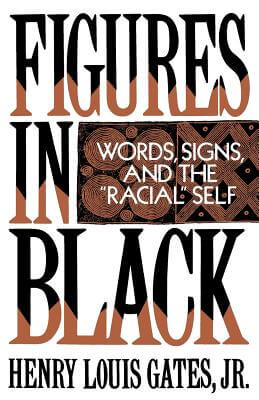 Figures in Black: Words, Signs, and the “Racial“ Self
Figures in Black: Words, Signs, and the “Racial“ Self
by Henry Louis Gates, Jr.Oxford University Press (Nov 30, 1989)
Read Detailed Book Description
For over two centuries, critics and the black community have tended to approach African-American literature as simply one more front in the important war against racism, valuing slave narratives and twentieth-century works alike, primarily for their political impact. In this volume, Henry Louis Gates, Jr., a leading scholar in African-American studies, attacks the notion of African-American literature as a kind of social realism. Insisting, instead, that critics focus on the most repressed element of African-American criticism—the language of the text—Gates advocates the use of a close, methodical analysis of language, made possible by modern literary theory. Throughout his study, Gates incorporates the theoretical insights of critics such as Bakhtin, Foucault, Lacan, Derrida, and Bloom, as he examines the modes of representation that define black art and analyzes the unspoken assumptions made in judging this literature since its inception. Ranging from the eighteenth-century poet, Phillis Wheatley, to modern writers, Ishmael Reed and Alice Walker, Gates seeks to redefine literary criticism itself, moving away from a Eurocentric notion of a hierarchical canon—mostly white, Western, and male—to foster a truly comparative and pluralistic notion of literature.
 Complete Poems of Frances E.W. Harper
Complete Poems of Frances E.W. Harper
by Maryemma GrahamOxford University Press (Apr 14, 1988)
Read Detailed Book Description
Frances Harper was renowned in her lifetime not only as an activist who rallied on behalf of blacks, women, and the poor, but as a pioneer of the tradition of ’protest’ literature, whose immense popularity did much to develop an audience for poetry in America. This collection of her poems is drawn from ten volumes published between 1854 and 1901. Their main issues are oppression, Christianity, and social and moral reform. Consolidating the oral tradition and the ballad form, and merging dramatic details and imagery with a strong political and racial awareness, Harper’s poetry represented a distinctly Afro-American discourse that was to inspire generations of black writers.
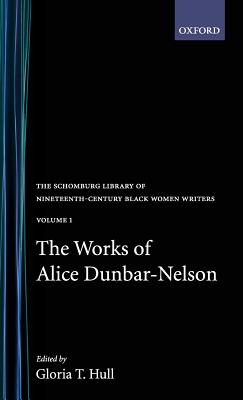 The Works of Alice Dunbar-Nelson: Volume 1
The Works of Alice Dunbar-Nelson: Volume 1
by Alice Dunbar-NelsonOxford University Press (Apr 14, 1988)
Read Detailed Book Description
"Alice Dunbar-Nelson’s journalism—especially her column for The Pittsburgh Courier, ’Une Femme Dit’—is without peer."—Eric J. Sundquist in The New York Times Book Review
Spanning the gamut of literary genres, from autobiographical short stories to poetry, journalism, and novelettes, this is a comprehensive collection of one of America’s most seminal women writers.
 The Works of Alice Dunbar-Nelson: Volume 2
The Works of Alice Dunbar-Nelson: Volume 2
by Alice Dunbar-NelsonOxford University Press (Apr 14, 1988)
Read Detailed Book Description
Spanning the gamut of literary genres, from autobiographical short stories to poetry, journalism, and novelettes, this is a comprehensive collection of one of America’s most seminal women writers.
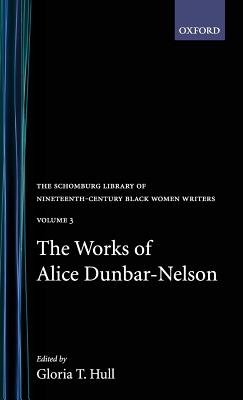 The Works of Alice Dunbar-Nelson: Volume 3
The Works of Alice Dunbar-Nelson: Volume 3
by Alice Dunbar-NelsonOxford University Press (Apr 14, 1988)
Read Detailed Book Description
Spanning the gamut of literary genres, from autobiographical short stories to poetry, journalism, and novelettes, this is a comprehensive collection of one of America’s most seminal women writers.
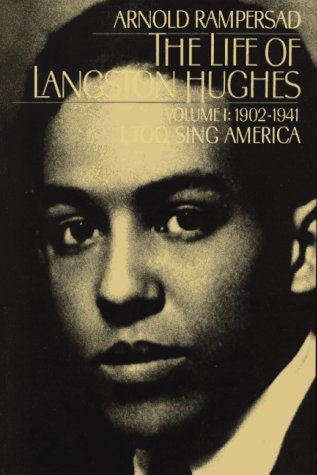 The Life of Langston Hughes: Volume I: 1902-1941: I, Too, Sing America
The Life of Langston Hughes: Volume I: 1902-1941: I, Too, Sing America
by Arnold RampersadOxford University Press (Feb 25, 1988)
Read Detailed Book Description
Poet, playwright, novelist, and a grand figure in the Harlem Renaissance of the 1920s, Langston Hughes stands as one of the most extraordinary and prolific American writers of this century. As the first installment of a two-volume biography, this portrait of Langston Hughes depicts his life from his birth in Missouri in 1902 to the winter of 1941.
Rampersad recounts Hughes’ early days in Kansas as a child of a family steeped in radical Abolitionism, with an ancestor who fought and died at Harper’s Ferry in John Brown’s band. Taught by his aged grandmother to revere freedom and justice, he nevertheless led a lonely life as a child. His mother left him in his grandmother’s care while trying unsuccessfully to launch a career in the theater, and his father—a black man who seemed to hate blacks—abandoned him to find a business career in Mexico. Hughes grew into a highly disciplined and yet restless adult who found personal salvation in poetry.
Inspired by both the democratic chants of Walt Whitman and the vibrant forms of Afro-American culture, Hughes became the most original and revered of black poets. Rampersad’s study traces the nomadic, yet dedicated spirit that led him—as a young man—to Mexico, Cuba, Haiti, Africa, Europe, the Soviet Union, China, and Japan, as well as all over the United States. During his travels, Hughes cultivated associations with a dazzling range of political activists, patrons, and fellow artists, including Paul Robeson, Zora Neale Hurston, Carl Van Vechten, Lincoln Steffens, Nancy Cunard, Ernest Hemingway, and Claude McKay.
Based on exhaustive research in archival collections throughout the country, especially in the Langston Hughes papers at Yale University’s Beinecke Library, Rampersad’s masterful work presents a vivid portrait of one of our greatest writers and a sweeping panorama of culture and history in the early twentieth century.
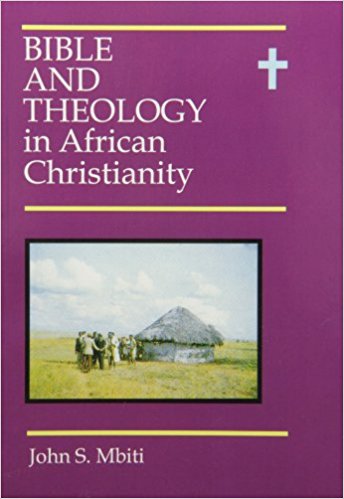 Bible and Theology in African Christianity
Bible and Theology in African Christianity
by John S. MbitiOxford University Press (Apr 16, 1987)
Read Detailed Book Description
 In The Matter Of Color: Race And The American Legal Process: The Colonial Period
In The Matter Of Color: Race And The American Legal Process: The Colonial Period
by A. Leon HigginbothamOxford University Press (May 29, 1980)
Read Detailed Book Description
Focusing on the actions and attitudes of the courts, legislatures, and public servants in six colonies, Judge Higginbotham shows ways in which the law has contributed to injustices suffered by Black Americans
Title: In the Matter of Color
Author: Higginbotham, Leon
Oxford Univ Pr
1980/05/29
Number of
Binding Type: PAPERBACK
Library of Congress: 76051713
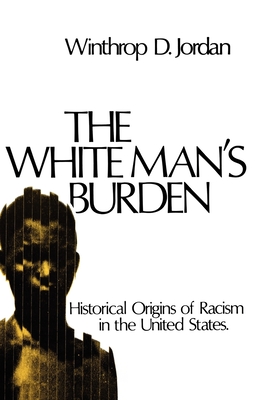 The White Man’s Burden: Historical Origins of Racism in the United States
The White Man’s Burden: Historical Origins of Racism in the United States
by Winthrop D. JordanOxford University Press, USA (Jan 24, 1974)
Read Detailed Book Description
An abridged version of the esteemed White Over Black, a recipient of both the National Book Award and a Bancroft Prize, aims to address a straightforward query: How did white individuals perceive African Americans during the initial two centuries following European and African settlement in what is now the United States? This study remains a cornerstone in the historical understanding of racial perspectives, deeply impacting the scholarly discourse on the subject.
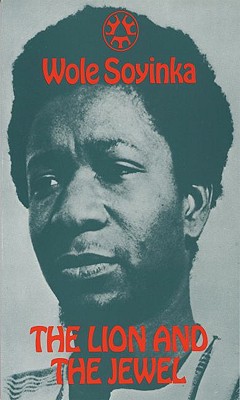 The Lion And The Jewel (Three Crowns Books)
The Lion And The Jewel (Three Crowns Books)
by Wole SoyinkaOxford University Press (Jan 01, 1962)
Read Detailed Book Description
This is one of the best-known plays by Africa’s major dramatist, Wole Soyinka. It is set in the Yoruba village of Ilunjinle. The main characters are Sidi (the Jewel), ’a true village belle’ and Baroka (the Lion), the crafty and powerful Bale of the village, Lakunle, the young teacher, influenced by western ways, and Sadiku, the eldest of Baroka’s wives. How the Lion hunts the Jewel is the theme of this ribald comedy.


